China Daily | Positioning HK as ‘City of Strategy’
China Daily | Push For ‘Unified National Market’ Gains Pace
Push For ‘Unified National Market’ Gains Pace As New Guidelines Consolidate High-level Opening

By Edward Tse
2022-04-13
A recent article authored by Gao Feng Advisory CEO Dr. Edward Tse was published by China Daily on April 13.
The Chinese government’s recent guidelines for accelerating the building of a unified national market envision discontinuation of local protection and market fragmentation to unblock key sticking points that weigh on the growth of the economy. This is a part of a wide-ranging push for an effectively regulated, competitive and fully open market across the country.
The new guidelines unveiled on April 10 will allow entrepreneurs to fully exploit advantages of China’s ultra-large domestic market, which will not only accelerate the building of a high-standard market ecosystem and expand opening-up to the outside world but shall also push in-depth reforms and high-quality development.
A unified national market will discontinue local protection and facilitate smooth flow of goods and services throughout the country. Moreover, it is expected to enhance efficiency and expand the scale of China’s domestic market.
The key initiatives are implementation of a unified market access system and development of a unified domestic market for productivity factors and resources to provide access to both domestic and foreign businesses, promote fair competition, and enhance predictability and stability of rules governing the market.
The way we understand it, Beijing has been working on such policies for some time, and official announcement of this policy must be viewed from a holistic standpoint.
While China has been undergoing reform and opening-up for more than four decades, many remnants from its old economic system still linger. Fragmentation of the market into many localities governed by local rules and regulations that offer protection for the local has been the norm. While progress has been made over the years in removing bottlenecks that impede growth, China, strictly speaking, has not become a unified market so far.
With the changes in the environment and the readiness of internal drivers, it is now possible and desirable to launch this new policy. Additionally, global geopolitics, the Russia-Ukraine conflict, the pandemic and other external factors have had an impact on China’s role in global business and trade has become somewhat uncertain.
In order to generate the needed growth in its economy, China needs to ensure stability in its internal business and trade, or in the Chinese way of saying, the “internal circulation”.
China is taking concrete steps to accelerate the building of a unified domestic market that is efficient, rules-based and open and encourages fair competition amid pressures emanating from a complicated and grim external environment and COVID-related apprehensions.
This is the country’s latest move to deepen market-oriented reforms and inject more dynamism into market entities, to propel sustainable growth of both domestic and foreign businesses.
In order to build a strong and unified domestic market, it is essential to remove market entry barriers for domestic and foreign companies, build an open market system and promote both internal and external movement of goods and services.
With the fast development of technology in China in recent years, it is now possible to leverage technologies such as big data, artificial intelligence and blockchain technology to break down barriers between local areas of interest.
In this context, companies and localities will need to think about their respective development strategies based on their competitive advantages, and not some pre-defined positional advantages.
For a unified market to take place properly, the government needs to make sure that the playing field is level and fair for all. Competition should be welcome and the rules of the game should be fair and transparent.
To this end, we can expect even larger market access for private-sector and foreign companies. This will foster further competition and innovation in China.
The idea of a unified national market has been in the works for some time. In fact, over the years, many foreign companies have questioned whether China was a national market or a series of local markets.
In the Chinese way, Beijing had begun experimenting with this policy at a regional level, in clusters as the Yangtze River Delta, the Jing-Jin-Ji (Beijing-Tianjin-Hebei) region and the Guangdong-Hong Kong-Macao Greater Bay Area. Experience from these pilot areas formed the basis for the new national policy.
Another goal is to reduce the cost of transactions by facilitating the market-oriented allocation of production factors and helping circulation of goods and services.
China will further unify the basic systems and rules, including those for property rights protection, market access, fair competition and social credit.
Facilities and platforms in different sectors, including logistics, deal information and transaction platforms, should be seamlessly connected across the country. A unified market will be established for various production factors, including land, labor, capital, technology, data and energy.
In addition, unified standards for goods and services will be set up. Supervision, regulation and law enforcement will be more standardized with the aim of breaking down local protection and regional barriers to ensure open and fair competition.
Representatives of some companies we spoke to mentioned that they could not quite get the reasons for and substance of this new policy. This is at least partly due to the way the policy was presented.
Some people thought this new policy is taking China back to its State-planning approach. While the State will certainly play an important role under this new policy, it will be largely the private-sector enterprises and foreign companies who will take part in the new game. Rules-based competition will become more prevalent and the overall efficiency of the entire Chinese economy should improve.
Overall, the building of a unified nationwide market plays a decisive role in balancing resource allocation, promoting a more level playing field and revitalizing growth across the country as a whole.
Along with the recent efforts at cracking down on monopolies, unfair competition, local protectionism and opening-up of industries, the new policy is also expected to create a more level playing field with a more unified and clear approach for both local and foreign players. The guidelines’ call for opening-up will go a long way to improve not only Chinese but also global supply chains and innovation chains for greater international economic activity.
China Daily | Nation Continues to Offer Promising Opportunities

By Edward Tse
2022-3-15
A recent article authored by Gao Feng Advisory CEO Dr. Edward Tse was published by China Daily on March 15.
Among multinational corporations, a sense of unease with today’s conflicts and sanctions is understandable, as they need to address short-term fluctuations and at the same time take an informed and confident view of the bigger picture.
Because of China’s important role in international affairs as the world’s second-largest economy and potentially the largest market in the world, it is providing an anchor amid global uncertainties.
China is the largest trading partner of many countries and is the epicenter of many global supply chains. It became the largest trading nation in 2013, and its largest trade partners include the European Union and the United States as well as geographical neighbors Southeast Asia, Japan and South Korea.
China is a member of the Regional Comprehensive Economic Partnership, a regional trade agreement with 15 countries that account for 30 percent of the world’s population and 30 percent of its GDP. The RCEP is the world’s largest free-trade agreement.
China’s quickly burgeoning middle-income population has become a substantial consumer of goods and services. According to the nation’s National Development and Reform Commission, China’s middle-income population has exceeded 400 million, with increasing market potential for imports.
China has consistently been opening up market access for foreign companies. The nation’s foreign direct investment inflows are now the largest in the world, and foreign companies are being provided with even wider access. In 2020, as the coronavirus outbreak spread across the world, FDI inflows into China grew to $163 billion, compared with $134 billion into the United States.
China has successfully shed its copycat image and is now viewed for its innovation. It sets its own standards in technology protocol, the creation of new business models and pioneering applications of the central bank digital currency. Its ability to define new lanes of innovation is becoming increasingly profound. Barring extreme unforeseen events, China’s role in global business and commerce is unlikely to diminish.
China’s internal policy focusing on technological innovations should structurally shift the patterns of global business and commerce going forward.
Its effective governance system, well-functioning clusters of industry segments and suppliers, and a general sense of “can do” attitude make global supply chains in China even more important for the world economy.
However, apprehensions of some degree of decoupling and sanctions could complicate global supply chains. In the near future, decoupling, recoupling and new couplings will likely generate new patterns of global supply chains. However, total decoupling is highly inconceivable.
Globalization just may enter a new era. China now strives to ensure that domestic demand and supply reinforce each other, while it continues to pursue external trade. These shifts in emphasis will be the main drivers of globalization going forward.
China is searching for its own form of modernity, with Chinese characteristics. Its modernity combines both the old and the new, Chinese and non-Chinese thought, collectivism and individualism, and ideology and pragmatism. It is inclusive in nature and yet allows for experimentation.
Achieving these goals will take time and require stability, strategic focus and composure. All of these will lead China to play an even larger and more important role in the world economy.
The key to any sound strategy is the ability of leaders to develop a clear and informed view of the future and guide future growth on the basis of synthesis of the past and the present.
Amid the current global turbulence, multinational corporations need to be vigilant and be able to visualize China’s role in the world going forward. A growing number of them are realizing that their global strategy has to have China at its core in the new era.
China Daily | New Era of Chinese Innovation Marks Its Transition
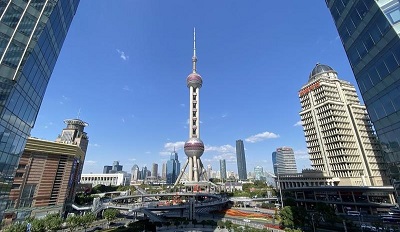
A recent article authored by Gao Feng Advisory CEO Dr. Edward Tse was published by China Daily on January 16.
Most people now recognize China’s ability to innovate and its status as a top digital economy in the world. Since the late 2000s, many companies have taken advantage of the growing penetration of wireless internet in China to develop innovative business models. With the emergence of newer disruptive technologies such as 5G, AI, blockchain and cloud computing, the nation has entered a new phase of technological innovation.
Coupled with the government’s latest policies announced as part of the 14th Five Year Plan, technological self-sufficiency has become a national imperative for the Chinese. To that end, the focus of innovation is now being shifted from consumer internet-driven to “hard tech” areas such as high-end semiconductor chips, precision and intelligent manufacturing, robotics, life sciences and others. In fintech, the central bank digital currency, or CBDC, has also become a priority.
Not too long ago, products made by Chinese companies were ridiculed as “shanzhai”, portrayed to be of low quality and lacking originality. Few expected the Chinese to turn around so quickly and become innovators in their own right. This has prompted Eric Schmidt, former Google CEO, to say, “(China’s) technology is generations ahead of what is possible in the West.”
This new era is epitomized not only by what technologies are being adopted or in which sectors innovations are happening, but also how China is shifting from being a technology standards follower to one setting global standards.
There are four ways in which the Chinese are beginning to set new standards. The first is in technology protocol setting, manifested currently in 5G rollout. The second is creating new innovative business models previously unseen. The third is transformation of industries by creating completely new sectors. And finally, the pioneering applications of the CBDC.
In technology protocol setting, Chinese companies such as Huawei have been leading the world, particularly in setting the standards for 5G. This technology has had a profound impact on many industries accelerating growth and development. For instance, 5G is enabling more advanced autonomous driving, remote diagnostics and operations, and digital twins.
In July 2020, during the 5G standard competition, the 3GPP 5G technology that Huawei invented was officially declared as the only international mobile communication technology standard by the International Telecommunication Union. By the end of 2023, 30 key industry standards are set to be finalized.
Chinese innovators have also developed new business models that set “standard” practices for others to follow. Examples include Tik Tok, a video-focused social media app; Taobao and JD.com, two major e-commerce players; and Meituan a food delivery app.
In 2021, Tik Tok overtook Google as the world’s most visited website. Its vast following suggests a strong sense of affinity that the app is able to generate with its users. Using AI-driven algorithms, Tik Tok and its domestic China twin Douyin assess users’ needs and push “tailor-made” content in areas that users are interested in, thus increasing the conversion rate for its advertising efforts. The powerful AI algorithms that optimize content creation, curation and recommendation are key factors behind Tik Tok and Douyin’s great success.
Tik Tok and Douyin, along with other social commerce apps such as Bilibili, Kuaishou and Little Red Book, have become major sales channels for consumer products. At the same time, Key Opinion Leaders, or KOLs, have revolutionized modern-day sales and marketing. Chinese as well as foreign companies have caught on to the trend with cosmetics brands such as Lancome and Estee Lauder leveraging KOLs and using social commerce in China.
China is also redefining standards for entire industries. A good example is the auto and mobility sector. The pioneering development of the connected digital economy has resulted in automotive companies rethinking their products, and entirely new breeds of mobility players have emerged. Concurrently, electric vehicle technology has been taking off and from early on, the Chinese government issued policies to encourage the development of new energy vehicles.
Along the way, cities across China were embedding intelligence in the infrastructure they were building for smart cities. This in turn generated synergistic effects which led to emergence of the new breed of smart and connected new energy vehicles that are becoming increasingly autonomous. Not only design and manufacturing, but the entire industry value chain has been disrupted as the role of software has become critical.
Foreign automakers have also recognized the innovation happening in China. For Ford, the China Innovation Plan and Smart Technology Plan are a core part of its “China 2.0 Strategy.”
China is the first major economy to develop and deploy a CBDC, an electronic record of a country’s official currency. CBDC will simplify cross-border payments and implementation of monetary and fiscal policy, and promote financial inclusion in the economy by bringing the unbanked into the financial system. While several countries are developing their own digital currencies, China is well positioned to take the lead with the digital yuan.
In April 2020, digital yuan pilot programs were launched in four cities. The digital currency’s debut was the culmination of a six-year journey that began when China’s central bank, the People’s Bank of China, announced research on a “Digital Currency/Electronic Payment” system in 2014. Today, digital yuan pilots are growing rapidly in scope and size.
The use of digital yuan could bring significant economic and political benefits to China, which could also help drive internationalization of the Chinese currency over time.
As China joins others in setting standards, its ability to create and define “new lanes of innovation” will become even more profound. This signifies the coming of a new era not only in China but also increasingly for the rest of the world.
How Technology Can Enhance Connectivity Across the GBA

By Edward Tse
A recent article authored by Gao Feng Advisory CEO Dr. Edward Tse will be published by China Daily in December 2021.
The Guangdong-Hong Kong-Macao Greater Bay Area (GBA) is a national level strategic imperative. It aims to deepen cooperation among the 11 cities in the region, leveraging comparative advantages of each while facilitating integration of the region’s economic development.
The GBA is unique as it includes three jurisdictions that are separated by physical borders. The connectivity for the flow of people, goods, capital and information, is critical for the functioning of the Greater Bay Area.
Financial services are one area where increased connectivity is all too evident. A series of programs instituted over the last several years have enabled investments across borders within the area. The Stock Connect and Bond Connect schemes were launched in 2014 and 2017 respectively, facilitating the flow of investment between Hong Kong and the mainland in stock and bond markets. Following the success of these programs, Wealth Management Connect, the first cross border scheme focused solely on the Greater Bay Area has been launched in October 2021, further opening up the mainland’s financial market while promoting economic integration in the region.
As China has now entered the new era powered by new technologies such as artificial intelligence (AI), 5G, blockchain and cloud computing, the GBA is leading the way in developing applications of these new technologies. Emerging innovations will further enable connectivity beyond what has been possible hitherto. During and after the pandemic, new patterns of business models have emerged along the way. These would span areas such as the next generation of smart cities and digitalization of traditionally offline industries such as healthcare.
The GBA has also become a hotspot for fintech innovation. Using blockchain enabled distributed ledger technology (DLT), integration of multiple services is now possible. One example is iShenZhen, a digital identity verification system in Shenzhen, which leverages DLT, big data and AI, to offer financial systems designed to function seamlessly across borders, furthering the goal of a synergized region.
China is also at the forefront of central bank digital currency (CBDC) research and application. The GBA is among the first to test China’s new digital currency. In October 2020, Shenzhen launched a digital currency trial, releasing virtual red packets to the public totaling 10 million yuan (US$1.47 million). These pilots continue to strengthen the GBA’s fintech infrastructure, while also preparing the region for adopting digital currencies and reap the key benefits of transparency and convenience.
Business models across the GBA are also being transformed. In healthcare, “Internet + Healthcare” platforms such as WeDoctor are helping GBA residents obtain online and offline one-stop “remote-diagnosis, treatment, and post-treatment” services through various channels conveniently. With the accelerated interconnectivity of health information, digital healthcare operations and cooperation in the region will become increasingly prevalent.
For people and goods movement, physical infrastructure (bridges and highways) and institutional infrastructure (systems and information) continue to integrate. The opening of the Hong Kong-Zhuhai-Macao Bridge and the comprehensive upgrade of other transportation infrastructure (airports, highways and high-speed rail networks) have helped further connect cities within the GBA. Meanwhile, autonomous driving players like AutoX, We Ride and Baidu’s Apollo are making headway in transforming transportation in cities such as Guangzhou and Shenzhen, making it more intelligent and autonomous, and paving the way for smart transportation systems throughout the GBA. Similar potential exists in the intelligent, connected and increasingly autonomous commercial vehicle sector.
In manufacturing, the GBA is navigating the road towards becoming an intelligent, connected, and distributed manufacturing hub. By 2022, increasingly, technologies in digital and automation aspects as well as data and cloud computing will re-define how manufacturing happens. As Hong Kong capitalizes on the opportunity to further its “re-industrialization” initiative, it will have the opportunity to leapfrog into a new manufacturing set-up and ecosystem where not everything needs to be physically located in Hong Kong, i.e., much can be in other GBA cities. Connectivity through technology will accelerate Hong Kong’s ability to re-build its position in manufacturing, and that will manifest in a new form.
Cities within the GBA are also becoming smarter, with the application of new technologies laying the foundation of digital infrastructure. Guangzhou, for example, is building a “digital twin city” covering key features of situational awareness, operations monitoring and real-time management. As cities become smarter, their ability to provide support in connecting key urban functions such as epidemic prevention and control is getting enhanced.
However, with greater connectivity come new challenges. The massive amounts of data being generated need comprehensive data security measures. The newly issued Data Security Law (DSL) and the Personal Information Protection Law (PIPL) are the first steps toward building legal support for the digital economy’s development. Cross-border data should be treated as a high priority for the GBA’s integrated development. Regulatory bodies across the borders must collaborate to form the rules and mechanisms for cross-border data management and security standards. Pilot programs for allowing cross-border data flows should be encouraged and undertaken.
Enhancing the connectivity within the GBA will be the key to it becoming a world leading region. Connectivity across multiple areas such as smart cities, manufacturing hubs, mobility and health care delivery boosts economic productivity and living standards. The GBA’s unique positioning makes it a role model to be adapted across China and potentially other parts of the world.
China Daily | 5G is Enabling More Innovations

By Edward Tse
2021-11-25
A recent article authored by Gao Feng Advisory CEO Dr. Edward Tse was published by China Daily on November 25.
The world in general, and China in particular, is entering into a new era of technological innovations enabled by not only 5G technology, but also artificial intelligence, blockchain and cloud computing.
Though 5G is still at the early stage of commercialization, the momentum and investments being made by industry players and governments around the globe are truly massive.
Over the next few years, the process of digital transformation is expected to undergo a new wave of innovation and significant acceleration because of 5G, AI, blockchain, cloud computing and other technologies.
According to the latest report by the Global Mobile Suppliers Association, 169 operators in 70 countries and territories have already launched 5G services. Total deployment of 5G base stations globally exceeded 1.02 million as of December 2020, and this number is expected to double to 2.1 million by the end of this year.
In the meantime, according to research by J.P. Morgan, the total number of 5G users in the world had exceeded 225 million as of the end of 2020. The number is expected to reach 3 billion by 2025.
China is at the forefront of development and adoption of 5G. China had 718,000 5G base stations as of December last year, almost six times the number of stations compared with runner-up South Korea.
At the same time, the number of 5G users in China has exceeded 200 million, versus a global total of 225 million, with a third of all 5G patents owned by China, according to Nikkei Asia.
5G will enable a wide range of applications in the context of “all-scenario intelligent connectivity” or simply an “all-scenario internet”.This means the emergence of ubiquitous intelligent connectivity across people, devices and machines. 5G will also play a role in driving development in areas like augmented reality, remote medical care, internet-of-things and “vehicle-and-road cooperation”.
Applications of 5G are also spreading in the industrial sector, where flexible production and smart manufacturing is taking place, in the healthcare sector where remote monitoring, remote consultation and instruction as well as remote operations are now possible, and in the pan-entertainment sector, in which cloud gaming and high-definition video services are becoming a reality.
As China embarks on its 14th Five-Year Plan (2021-25), in which technological innovation is the key goal, and as it starts to implement key policies such as common prosperity, rural vitalization, carbon neutrality and dual circulation, 5G applications will play crucial roles in helping to drive these policies and implementations.
A very hot topic now is the quick development of the “metaverse”, which is a collective virtual shared space, created by convergence of virtually enhanced physical reality and physically persistent virtual space.
It mixes technologies such as augmented reality, virtual reality, mixed reality and brain-computer interface to create immersive and interactive experiences for the users, and functions that were unimaginable in the past.
The technology is nascent. However, a large number of leading companies have already expressed strong interest in getting into this space. Facebook CEO Mark Zuckerberg announced that his company will imminently be changing its name to Meta to indicate its growing focus on the metaverse.
Other leading tech companies such as Microsoft, Nvidia, and Roblox have all announced their new focus on the metaverse space.
5G and AI are the key enablers of the commercialization of the metaverse. In order to connect to the metaverse, people will need connectivity speeds running into the hundreds of megabits per second that only 5G can deliver.
In the future, 5G could remove the need for devices’ heat-generating components and bring down the cooling and power needs.
On the consumer side, 5G could also stimulate new demand. The gradual enrichment of consumption patterns will promote major changes in user experience requirements and may further lead to new industries or new business models.
Like many other aspects of businesses these days, commercialization of 5G will be somewhat affected by geopolitics as well as issues such as sovereign regulation of data security. These aspects could complicate commercialization of 5G to some extent, as the pursuit of connectivity continues. As such, companies need to incorporate these considerations into the formulation of their business strategies going forward.
5G, along with other technologies, has created a new inflection point in innovations. It will breed major opportunities for innovation across a wide range of sectors.
It will also require much more customer support along its entire value chain, all the way from R&D and design to manufacturing and support and services. Very exciting times are ahead as we see a totally new game being created.
China Daily | China, US to Play Key Roles in New Era
China, US to Play Key Roles in New Era of Globalization
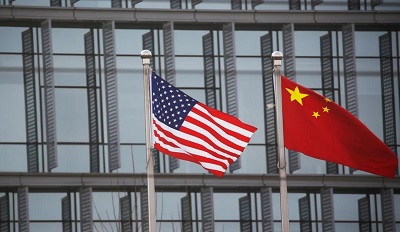
By Edward Tse
2021-10-27
A recent article authored by Gao Feng Advisory CEO Dr. Edward Tse was published by China Daily on October 27.
US Trade Representative Katherine Tai, in a speech on Oct 4, said that instead of the decoupling of the United States and China, perhaps people can start thinking about “recoupling”, indicating that the notion of decoupling is either over or losing relevance.
The administration of former US president Donald Trump imposed or threatened to impose a range of measures that some viewed as precursory to the two countries decoupling in terms of economy, trade and technology. These measures included putting a number of Chinese tech companies, such as Huawei, SenseTime and Hikvision, on an “entity list” and limiting their business with the US.
This was intended to bar Chinese participation in the US communications network and threatened the US operations of Chinese companies such as TikTok, WeChat and Xiaomi.
At the height of the COVID-19 outbreak in China in early 2020, many expected a large number of foreign companies, particularly US companies, to leave China in droves. These people called this expected phenomenon “de-Sinicization”.
However, a media report said US-China bilateral trade reached $630 billion in 2020, a 16.4 percent year-on-year increase. In the first six months of 2021, it grew 45.7 percent year-on-year to $341 billion.
In a survey by the Shanghai American Chamber of Commerce released in September, 72 percent of 125 respondents with manufacturing operations in China said they had no plans to move any production out of China in the next three years.
Separately, Samantha Vortherms, assistant professor of political science at the University of California, Irvine, and Jiakun Jack Zhang, assistant professor of East Asian politics at the University of Kansas, found that the US-China trade war had not prompted US businesses to leave the Chinese market.
The record foreign direct investment flow into China in 2020 indicates that businesses in both countries remain deeply integrated with each other. “The degree of decoupling, measured by foreign direct investment, has been greater in the minds of politicians and pundits than the reality of firms in China,” the Shanghai American Chamber of Commerce said in its annual China Business Report.
Moreover, various sectors have reacted to the driving forces in very different ways.
While the US has restrained Huawei from participating in the building of the 5G communications network in its domestic market, US tech companies can still work with Huawei in international 5G standards development activities.
In the semiconductor industry, both the Chinese mainland and the US are trying to strengthen their own semiconductor value chains, with key players such as Taiwan’s TSMC and South Korea’s Samsung setting up new manufacturing plants outside of their home bases. Key parts and components producers are looking at new strategies because of the quickly shifting global landscape.
Global automakers need to consider two systems-one China-centric and one US-centric-as the speed, intensity and sophistication of smart infrastructure being built by China and the US continue to diverge.
However, in industries such as agriculture and food, globalization will likely expand. China’s growing middle-income group means increasing demand and higher requirements for nutritious food. This demand would have to be met partially with sourcing from abroad.
While the past three decades of globalization have greatly reshaped the world, the fundamental nature of globalization is changing in major ways.
In the first era of globalization, the West was the major center of demand, and China was the major source of supply for a wide range of products.
While this continued in globalization’s next phase, China’s rapidly growing middle-income group and the drive for upgrading business capabilities are making it a center of demand as well as supply.
Hence, the “dual circulation” paradigm-in which the domestic market is the mainstay and the domestic and foreign markets reinforce each other-is emerging, consistent with the new economic policy. Regional trade agreements such as the Regional Comprehensive Economic Partnership will expand the “internal circulation”.
While these will probably be the key themes going forward, a certain amount of regionalization or localization of supply chains could also take place, and perhaps a certain degree of “re-shoring” of manufacturing to the US.
Will any decoupling between the US and China occur?
As long as US sanctions on some of the Chinese tech companies remain, some degree of decoupling will continue.
Data security is increasingly viewed as a national security issue. As such, the US and China will expect businesses operating in their respective jurisdictions to comply with their internal regulations, leading to some degree of decoupling.
In addition, the increasing divergence of the intensity and sophistication of the two countries’ digital infrastructures would mean some companies will have to follow different strategies.
However, the world is being driven into a new era of globalization, in which both the US and China, the world’s top two economies, will play critical roles, collaborating in some cases and competing in others.
As humanity searches for greater interconnectivity, decoupling would not be fully aligned with that trend. In many aspects, there never really was any decoupling, so there is no need for recoupling.
In some specific cases, decoupling or partial decoupling did happen, and as US Trade Representative Tai said, perhaps it is now time for recoupling.
In the increasingly interconnected world, a simplistic notion of decoupling does not make much sense, and it will not happen. Going forward, the US-China relationship will become much more intricate and sophisticated, and win-win cooperation will be optimal.
China Daily | Decoupling vs Recoupling
Decoupling vs Recoupling: US-China Ties to Become More Intricate and Interconnected
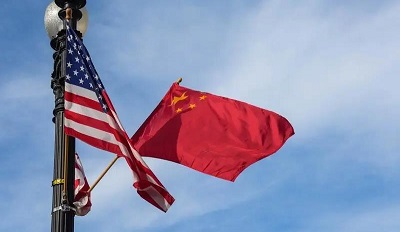
By Edward Tse
2021-10-14
A recent article authored by Gao Feng Advisory CEO Dr. Edward Tse was published by China Daily on October 14.
US Trade Representative Katherine Tai, in a speech on Oct 4, said that instead of the decoupling of the United States and China, perhaps people can start thinking about “recoupling”, indicating that the notion of decoupling is either over or is losing relevance.
Is she right? Did decoupling ever happen? If so, to what extent and will it continue to happen in the future? What are the implications for businesses?
The Trump administration imposed or threatened to impose a range of measures that some viewed as precursory to the two countries decoupling in economic, trade and technology terms. These measures included putting a number of Chinese tech companies, such as Huawei, SenseTime and Hikvision, on an “entity list” and imposing restraints on them in doing business with the US.
Besides, there was the threat of “cleaning the network” – barring Chinese participation in the US communications network, threatening US operations of some Chinese firms such as TikTok, WeChat and Xiaomi.
At the height of the COVID-19 outbreak in China in the beginning of 2020, many expected a large number of foreign companies, particularly US companies, to leave China in droves. These people called this expected phenomenon “de-sinicization”.
Let us examine what has happened since then.
According to a recent Financial Times report, inflow of funds to China has reached a new record. Cumulative foreign direct investment has risen from $587 billion in 2010 to $1.9 trillion in 2020. Although global FDI flows fell 35 percent to $1 trillion last year, FDI inflows into China still rose from $141 billion to $149 billion.
Similarly, US-China bilateral trade reached $630 billion in 2020, a 16.4 percent increase over 2019. In the first six months of 2021, it grew 45.7 percent year-on-year to $341 billion.
In a survey by Shanghai American Chamber of Commerce released in September, 72 percent of 125 respondents with manufacturing operations in China said they had no plans to move any production out of China in the next three years.
Separately, Professors Samantha Vertherms of the University of California, Irvine and Jiakun Jack Zhang of the University of Kansas have found that the US-China trade war has not prompted American businesses to leave the Chinese market.
The record FDI flow into China in 2020 indicates that businesses in both countries remain “deeply integrated” with each other. The authors wrote, “Decoupling… has been greater in the minds of politicians and pundits than the reality of true businesses in China, we find little evidence that US (multinationals) are playing their part in the great power rivalry by patriotically abandoning China.”
Before the Trump administration took specific measures against China, most thought humanity was entering an era of ubiquitous connectivity aided by the internet, artificial intelligence and advancing network technology. Countries, multilateral institutions, businesses and individuals were assuming the continuation of that scenario into the future.
The measures of the Trump administration and the subsequent outbreak of the pandemic changed that picture significantly, leading to greater clarity about differences in agendas of the two strongest powers in the world.
Against this backdrop, various sectors have been reacting to these driving forces in very different ways.
While the US has restrained Huawei from participating in the building of the 5G communications network in its domestic market, US tech firms can still work with Huawei in international 5G standards development activities.
In the semiconductor industry, while earlier it was structured on the basis of global division of labor, it is now being subjected to new realities of geopolitics and individual country policies.
Both China and the US are trying to strengthen their own semiconductor value chains, with key players such as Taiwan’s TSMC and Korea’s Samsung setting up new manufacturing plants outside of their home countries. Key parts and components producers are now looking at new strategies because of the quickly shifting global landscape.
International automakers now need to consider the “One World, Two Systems” (One China-centric and one US-centric) as the speed, intensity and sophistication of smart infrastructure being built by China and the US continue to diverge.
This has direct implications for design and business models of intelligent and connected vehicles that are increasingly being equipped with autonomous driving capabilities.
However, in industries such as agriculture and food, globalization will likely expand. China’s growing middle class means increasing demand and higher requirements of nutritious food. This demand would have to be met partially with sourcing from abroad.
While the last three decades of globalization have greatly reshaped the world, its fundamental nature is changing in major ways.
In the first era of globalization (let’s call it “Globalization 1.0”), the West was the major center of demand and China was the major source of supply for a large range of products.
While this continues in globalization’s next phase (“Globalization 2.0’), China’s rapidly growing middle class and the drive for upgrading business capabilities is making it a center of demand also, in addition to supply.
Hence a “dual circulation” of both domestic and international supply and demand is emerging, consistent with the new economic policy. Regional trade agreements such as Regional Comprehensive Economic Partnership (RCEP) would expand the “internal circulation”.
While these would probably be the key themes going forward, a certain amount of “regionalization” or “localization” of supply chains could also take place, besides perhaps a certain degree of “re-shoring” of manufacturing to the US.
So, will any decoupling between the US and China be happening?
As long as US sanctions on some of the Chinese tech companies remain, some degree of decoupling would continue to happen.
Data security is increasingly viewed as a national security issue. As such, the US and China will expect businesses operating in their respective jurisdictions to comply with their internal regulations, leading to some degree of decoupling.
Also, the increasing divergence between the intensity and sophistication of digital infrastructures of the two countries would mean some companies shall have to follow different strategies.
However, the world is being driven into a new era of globalization in which both the US and China will play critical roles, collaborating in some cases and competing in some.
As humanity searches for greater interconnectivity, decoupling would not be fully aligned with that trend. In fact, in many aspects there was never really any decoupling and so there is no need for “recoupling.”
In some specific cases, decoupling or partial decoupling did happen and as Tai said, perhaps it is now time for recoupling.
In the increasingly interconnected world, a simplistic notion of decoupling does not make much sense and it will not happen. Going forward, the US-China relationship would become much more intricate and sophisticated and win-win cooperation will be optimal.
China Daily | Nation’s Semiconductor Industry at a Turning Point

By Edward Tse, Alexander Loke and Rachel Hu
2021-06-10
A recent article authored by Gao Feng CEO Dr. Tse was published by China Daily on June 10. It was co-authored by Associate Alexander Loke and Senior Consultant Rachel Hu.
Recently, there has been much news about the global shortage of semiconductor chips. Some pundits have called it a crisis because China is the world’s largest consumer of semiconductors, taking up more than 50 percent of the global supply, and yet its production of high-end chips is limited.
United States sanctions on technology exports to China, as well as pandemic-related supply chain disruptions, have caused a severe chip shortage. Businesses and consumers around the world are now facing growing supply concerns.
The first tipping point arose when former US president Donald Trump began imposing sanctions on chip exports to key Chinese manufacturers such as Huawei, causing a plethora of disruptions in the entire semiconductor industry worldwide.
Over the years, China has relied heavily on imports of high-end chips as it followed the rules of globalization and a natural division of labor across different economies in the world. High-end semiconductor chips involve significant inherent risks, and the industry requires huge upfront investment. Therefore, a division of labor across the world with key parts of the value chain concentrated in the hands of a few players in specific geographies makes sense.
However, the US sanctions on chips supplies to China have disrupted these fundamentals. China has realized that self-sufficiency in core technologies such as semiconductors will be critical going forward.
China’s move toward self-sufficiency in semiconductors raises new questions on the future of existing global players. Peter Wennink, CEO of ASML, a leading manufacturer of lithography equipment for the production of computer chips, recently told news outlet Politico that Europe should not restrain exports to China, like the US has done. Beyond exports, foreign players also need to integrate with China’s ecosystems, with a local presence.
The push for self-sufficiency by China, the world’s largest chips buyer, is driving further advancements in new technologies. The semiconductor industry has become a national top priority. The 14th Five-Year Plan (2021-25) calls for an increase in research and development spending of more than 7 percent annually in those five years, focusing on key technology areas, including semiconductors.
Under the nation’s Made in China 2025 industrial plan, 70 percent of the semiconductors it uses are to be produced domestically by 2025.
China is making progress in technology and innovation. The Suzhou Institute of Nano-Tech and Nano-Bionics reported a breakthrough in laser lithography technology last year, which is expected to lead to domestic production of advanced lithography machines. However, this is still at an early stage and years away from commercialization.
In May last year, Semiconductor Manufacturing International Corp began mass production of Kirin 710A chips for Huawei, and now Huawei builds hardware with a foundry other than Taiwan Semiconductor Manufacturing Co. In October, SMIC said it would soon produce 7-nanometer wafers for the Chinese market. In addition, China Electronics Technology Group Corp has developed a series of homegrown ion implanters, enabling production of 28-nanometer wafers, a crucial industry component.
China’s moves in the semiconductor industry are reshaping the industry’s global dynamics. Major US suppliers including Qualcomm have reported lower revenues and are lobbying against sanctions on exports to China. Industry experts are expecting the US share in the global semiconductor market to drop about 10 percent and revenue to decline more than 20 percent in the next three to five years.
As an attempt to address such issues, the China Semiconductor Industry Association and the US-based Semiconductor Industry Association have formed a working group to discuss how to resolve issues such as intellectual property, trade policy and encryption.
The rise of Chinese players as well as the actions of the US, the European Union and other governments will make competition in the industry more intense. China’s semiconductor industry has clearly entered a new era, as its competitiveness is sharpening and its structure is changing. Supply and value chains in the rest of the world are changing accordingly.
Different types of players are jostling for position in the evolving value chain. Incumbents and disrupters, foreign and local, along with State-owned and privately owned enterprises, are looking to compete, innovate and collaborate.
TSMC’s latest investments may solidify its position globally. In April, TSMC earmarked $2.87 billion to expand its Nanjing facilities and announced plans for a $12 billion factory in the US state of Arizona, covering two major global markets.
The European Union also outsources a lot of its design and manufacturing capabilities and is now offering subsidies for new chip plants in Europe. The industry is moving toward the more advanced 5-, 3-and 2-nm chips.
Moore’s law, which posits that the number of transistors in a dense integrated circuit doubles every two years or so, seems to have reached its limit, and innovation in the semiconductor industry may have reached a bottleneck. Disruptions in core semiconductor technologies could take place, potentially resulting in major structural changes in the industry.
Companies now face an evolving and new strategic landscape. They will need to re-imagine the future landscape of the global semiconductor industry, in which China will play an increasingly large and more critical role.
China Daily | Understanding ‘Dual Circulation’ Policy
Understanding ‘Dual Circulation’ Policy Important For Companies

By Edward Tse
2021-05-23
A recent article authored by Dr. Tse was published by China Daily on May 23, 2021.
There appears to be considerable confusion about what China’s “dual circulation” economic policy really means and what would be its implications for individual companies.
It was over a year ago when the “dual circulation” policy was announced during the Politburo Standing Committee meeting on May 14, 2020, which was later incorporated into the 14th Five-Year Plan (2021-25) proposals announced in October.
The simple narrative is that the “dual circulation” strategy aims at boosting both domestic and overseas markets, with the two complementing each other. Growth in domestic production, distribution and consumption is expected to become the key driver of economic growth, spurring technological innovation and expansion of domestic supply chains, and boosting China’s role in global supply chains.
The “dual circulation” policy was devised in the wake of two key developments.
The first was disruption in global trade because of disputes between China and the United States and later because of adverse effects of the COVID-19 pandemic. The general expectation is that international trade patterns will remain skewed going forward.
The second is the continuing rise in domestic demand. The middle class is believed to have swelled to about 400 million, according to China’s National Bureau of Statistics. Not only is the size of the middle-class population likely to keep growing, but the composition of consumption, too, is likely to keep moving up the value chain, demanding newer and more innovative products. Domestic demand is growing rapidly due to a number of reasons, most importantly some specific policies launched by the Chinese government. Consumption has in fact become increasingly important in China’s economy. According to the Bureau of Statistics, consumption accounted for 54.3 percent of China’s GDP in 2020, an increase of 10 percentage points in a decade. Important is the fact that the country’s effective control of the pandemic resulted in a rapid recovery of consumer demand.
The Chinese government is apparently focused upon stimulating domestic consumption, driving high-quality growth and continuing the restructuring and upgrading of the supply side.
Among policies that are boosting and upgrading domestic demand are those related to areas such as new-energy vehicles, carbon neutrality, public health, rural revitalization, mega regional city clusters development and the like. New demand patterns are evolving and the economic landscape is changing.
On the supply side, the Chinese government will continue to push consolidation of excess capacities in sectors where it is necessary to do so. The increasing prevalence of technology and innovation across different industry sectors is leading to upgrading of the supply chains, and this is strengthening China’s position as a major hub for global supply chains.
As supply chains in China become stronger and more resilient to changing demand patterns, its position as an export base will continue to improve. At the same time, demand for imports of agricultural products, raw materials, high-end parts, precision machinery, high-tech medical devices, luxury consumer goods and the like see spectacular growth, making China a major market for overseas suppliers.
Clearly, a new era of globalization is evolving. If we call the first tranche of globalization that began some decades ago “Globalization 1.0”, perhaps we can term the second phase “Globalization 2.0”. The fundamental difference is that while demand in Globalization 1.0 was primarily from the US and other Western developed countries and China (and other developing countries) was the principal supplier, in Globalization 2.0, China will become a major demand center as well as a supply center. It will be home to mammoth global supply chains and shall itself be a major market for the entire world.
While Globalization 2.0 will probably be the main trend going forward, certain levels of regionalization and localization of supply chains will be inevitable, partly due to economics and technology, and partly due to geopolitics. The interplay between the new wave of globalization and the deglobalization that many believe has started will lead to many new trends, some expected and some not quite so.
Nonetheless, China’s role in the world will become even more important. For many businesses, China’s importance as a market and as a global or regional supply base will continue to strengthen. However, there is no room for companies to be complacent as the overall context of China, particularly its policies and competitive landscape, will continue to evolve extremely fast. What might have worked yesterday might not work tomorrow.
China has increasingly become an epicenter of business innovations. The incredible pace and intensity of innovations in China means that companies that want to stand out will need to be extremely innovative.
For foreign companies, the key questions are agile adaptation of strategy and organization by their operations in China and adjustment of global strategy treating China as the core. Their ability to continuously transform themselves commensurate with the changing context will be critical.
For Chinese companies, the ability to continuously improve their overall capabilities, to be at the front end of the innovation curve, and (for some) to be more internationalized will be the key.
The “dual circulation” policy does not mean China will close its doors and expel foreign companies. Conversely, it implies an even more open economy providing more market access to foreign as well as non-State-owned Chinese companies. In fact, it is a key mechanism for the Chinese government to strengthen its positioning on globalization and multilateralism. Companies, foreign or local, should adapt their strategies and organizations in tune with these changes.
China Daily | Auto Industry Gets Smart, Adapts to Market Changes
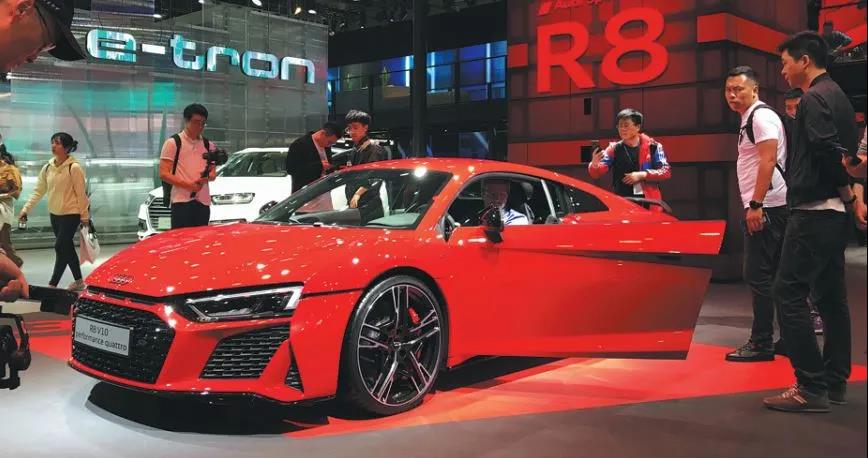
By Edward Tse and Bill Russo
2021-04-14
Gao Feng Advisory CEO Dr. Edward Tse’s article entitled, “Auto Industry Gets Smart, Adapts to Market Changes” (co-authored with Bill Russo) was published on China Daily on 14th April. Dr. Tse said China’s auto industry has entered a new disruptive era with plenty of players joining the new game. New corporate relationships are being formed creating new collaborations but also competition. This will lead to emergence of stronger players and will weed out marginal ones.
While auto sales in China suffered a significant drop of 42.4 percent in the first quarter of 2020, they have steadily rebounded and, in 2020, exceeded 25 million units, accounting for 33 percent of the world’s auto sales.
The Chinese government has made development of new energy vehicles a priority for the country. In September, President Xi Jinping announced the plan to have the country’s CO2 emissions peak before 2030, and to achieve carbon neutrality by 2060.
Two months later, the State Council, China’s Cabinet, also announced a 15-year (2021-35) industry development plan, setting clear targets for penetration of new energy vehicles: to achieve 20 percent by 2025, 40 percent by 2030, and more than 50 percent by 2035.Major government incentives include tax exemptions and support for the construction of electric vehicle charging stations.
As a result, new energy vehicles accounted for 5.4 percent of total auto sales in China last year and are expected to grow to 6.9 percent this year, according to the China Association of Automotive Manufacturers.
Vehicles are now considered to be the next big thing in the era of the internet of things, so intelligent connectivity is becoming standard in today’s vehicles.
Along the way, China’s auto industry is also rapidly commercializing self-driving vehicle technology. L4(a high degree of driving automation) robo-taxi trials are already taking place in a number of Chinese cities, including Shanghai, Guangzhou, Nanjing and Changsha.
L4 autonomous vehicles are also being used for the movement of goods. In July, Chinese automaker SAIC announced its quasi-commercial operation of a self-developed “5G plus L4” smart heavy truck at Yangshan Port in Shanghai. Chinese tech giants like JD.com, Alibaba and Meituan are all experimenting with unmanned last-mile delivery.
The Chinese government has also relaxed its requirement for ownership by foreign original equipment manufacturers. Previously, they could only operate in China through 50/50 joint ventures with local Chinese partners, but now they can have full ownership. Tesla entered China through a wholly owned operation based in Shanghai, and Volkswagen restructured its joint venture with Jianghuai Automobile Group Corp to have 75 percent ownership.
Investments are ramping up in China, the world’s largest auto market. In 2020, the amount of investment and financing in the nation’s automobile and transportation sector reached $8.6 billion, predominantly in new energy and autonomous vehicles.
Attracted by the upward exponential growth potential of this industry, new players with different backgrounds are entering the market.
For example, Internet giant Baidu has set up a joint venture with local carmaker Geely, which recently built the next generation of smart vehicles.
In addition, Xiaomi, the world’s third-largest smartphone maker, has announced it will set up a new business aimed at making electric cars that will be led by the company’s CEO, Lei Jun, with $10 billion of investment over the next 10 years.
Startups are popping up along the entire value chain of the auto industry. Horizon Robotics, a 5-year-old company specializing in artificial intelligence chips for autonomous vehicles, aims to raise more than $700 million in its series C round. The new capital injection will be used to accelerate the development and commercialization of the next-generation L4 and L5(full driving automation) autonomous chips. Neolix, a self-driving logistics startup based in Beijing, is chasing after the rapid growth of China’s autonomous vehicle market and says it has sold more than 200 vehicles to such customers as Huawei, Alibaba and JD, with the vehicles deployed in 20cities throughout China.
At the same time, incumbent original equipment manufacturers have been repositioning themselves in order to strengthen their competitive advantages in the new game.
In October 2018, Daimler’s mobility service and Geely announced the formation of a joint venture to provide a premium ride-hailing service called StarRides. The service, which was launched in December 2019 in Hangzhou, Zhejiang province, now covers the majority of China’s metropolises and popular travel destinations.
As one of the biggest domestic players in China, Geely is aiming to become a full-range transportation solutions provider through self-built capabilities and partnerships. Over the past decade, Geely has launched Lynk& Co (a connected car brand providing personalized mobility services), Polestar (a premium electric vehicle brand that uses a subscription model), Caocao (a new energy vehicle ride-hailing platform), and has acquired Volvo Cars, London Taxi Co, Terrafugia (the first flying car company in the world) and has signed strategic agreements with Baidu, Tencent, Foxconn and Daimler to provide vehicle-related services.
In the past, the dominant form of corporate structure in China’s auto industry was joint ventures between Chinese and foreign companies. Going forward, a plethora of new corporate relationships will surface, ranging from wholly owned operations to various types of joint and corporate ventures.
Demand and supply will continue to increase significantly. It is quite possible that oversupply will emerge, at least in certain segments. More rigorous customer demand might increasingly emerge, new policies reshaping the industry will continue to evolve, and hyper-intensive competition will manifest.
To this end, past success won’t be a guarantee for future success. Some companies will end up being marginalized and perhaps be squeezed out of the picture. The winning companies will be the ones that can learn, adapt and strengthen along the way.
China Daily | Impact of Innovations by China Continues to Spread

Prompted by the United States government’s sanctions on core technologies such as high-end semiconductor chips, Beijing has committed to building up core technologies within China.
Last year, 227.6 billion yuan ($35.02 billion) was pumped into China’s semiconductor industry, a stunning 407 percent increase from the previous year. Central and local governments have launched hundreds of policies or guidance funds to support the industry’s growth, while venture capital investment into the sector more than tripled from 2019.
The auto industry is another example of an industry undergoing major innovations as new energy vehicles, artificial intelligence, connectivity and mobility as a service are all taking place at the same time. Various trials of autonomous driving are also taking place in cities in China.
In the consumer sector, the internet continues to drive different forms of innovation. Social commerce, for instance, has become an important channel for companies to meet rising consumer demand and adopt new business models enabled by innovative technology, such as 5G and AI, to offer more customized and interactive services.
China has announced a comprehensive plan to upgrade its manufacturing capabilities by 2025 via eight priority areas in order to sharpen its global competitiveness. The emphasis on advanced manufacturing remains an integral part of China’s 14th Five-Year Plan (2021-25) and is aimed at fixing its weaknesses in areas such as key components, materials, software and fundamental systems over the next five years, while developing a more innovative, higher value-added industrial value chain to enhance its competitiveness in priority areas.
In September, President Xi Jinping announced that China will commit to achieving carbon neutrality by 2060. This is a massive commitment, given China’s scale and historical reliance on fossil fuels. As Xi has called on all other countries to support global sustainability, China is also demonstrating that it is stepping up in addressing an issue that has long been a major challenge for the world.
While China eradicated domestic absolute poverty earlier this year, a herculean effort in its own right, it announced the establishment of the Rural Revitalization Bureau to consolidate and expand the nation’s achievements in poverty alleviation via leveraging a dynamic monitoring and assistance mechanism to prevent people from falling back into poverty. In addition, it will continue to improve infrastructure in resettlement areas and improve people’s capability to provide for themselves.
These major steps, plus many others, indicate that China will continue its reform and transition, which will in turn generate considerable economic growth.
Certainly, when most of the rest of the world is still suffering from the COVID-19 pandemic, China is shining as one of the few bright spots for many foreign multinational corporations.
Even though Chinese innovators have begun to show up in significant numbers since the wireless internet became prevalent in China in the late 2000s, most multinationals were still unconvinced until Chinese innovation became a household phenomenon.
Fortunately, most multinationals today have come to realize the overwhelming impact of Chinese innovation, and many of them have begun to internalize how and what they can learn from the Chinese in this regard.
The head for China of a large US industrial company once told me that he thought he came to China to teach, but after some time in China, he recognized he was in China to learn. Another large US client told me their board of directors instructed the China team to seek how to leverage Chinese knowledge to help businesses in other parts of the world. BMW, for example, has taken its Munich-based Startup Garage program to China in order to gain exposure to new innovative technologies, such as electrification and automation, from a more advanced local ecosystem.
Big multinational businesses are now realizing that running businesses in different parts of the world requires different patterns, in particular realizing the differences between China and the West. It’s not a matter of what is right and what is wrong, but simply that different markets have very different contexts.
The insistence on a single path to the final goal is not very helpful. Pluralism naturally exists. To this end, the significant changes in multinational corporations due to their experiences in China provide the world with a good reference for how to view the world today.
China Daily | Pandemic Clips Business Travelers’ Wings
China Daily | Experts Say China Key to Global Recovery
China Daily | Many Unicorns Don’t See Profits

China Daily Global
Updated: 2019-05-27
The Hurun Research Institute, which compiles lists of China’s wealthiest individuals, released the Hurun Greater China Unicorn Index 2019 Q1 along with the Hurun China Future Unicorns 2019 Q1 on May 7.
According to Rupert Hoogewerf, chairman and chief researcher of the Hurun Report, which is a research, media and investments business, the total number of unicorns-startup companies valued at $1 billion or more-in China has reached a record 202, possibly the highest across the globe.
These Chinese unicorns include Alibaba’s financial technology affiliate Ant Financial, which is valued at $150 billion, and ByteDance, an internet company behind machine learning-enabled content platforms like TikTok (also known as Douyin) and Toutiao.
Tech startups today have not been able to replicate the financial success of well-known tech giants such as Google, Facebook and Alibaba. For example, China overtook the United States in AI investment in 2017, but around 90 percent of the AI companies were unprofitable.
This phenomenon is not exclusive to China. Some of the biggest names around the world have yet to make money, such as the publicly listed electric car maker Tesla and music streaming company Spotify, which are losing billions. Ride-hailing platform Uber lost $1.8 billion last year, but still made its debut on the New York Stock Exchange this month.

Although there are many startups that are unprofitable, it is probably unfair to compare established tech companies with the internet unicorns of today. The nature of entrepreneurship implies that there will always be winners as well as losers, best illustrated recently by the dotcom crash.
So what is driving the rapid valuation growth of many internet startups that are still incurring huge financial losses? Favoring growth over profit, investors are embracing so-called “growth companies” like Amazon, the world’s third most valuable company despite pale profits. As capital is currently cheap, creating growth is more valuable than improving margins.
Why then, do some startups fail but some eventually succeed? First, many of those that failed were not able to address an essential need. The digital boom and fast money in the 2000s created plentiful space for first-generation technological companies, especially in sectors like e-commerce.
However, it is becoming harder for the current generation of tech companies to tap into that growth, since low-hanging fruit has already been taken.
As investors continue to search for the next Alibaba or Google and more unicorns appear, some might just need time to prove themselves, while others will simply be growing for the sake of growth without any prospects for profit.
China Daily | Finding a Third Way Forward

By Edward Tse | China Daily Asia
Agile Chinese entrepreneurs are emerging as business thought leaders with their ‘multiple jumping’ expansion strategy
Ever since Deng Xiaoping hit the gas pedal on China’s economic reform when he made his famous Southern Tour to Shenzhen in 1992, companies in China — big and small — have been looking for ways to better manage, develop strategies and capture value.
For the first 30 years of the People’s Republic of China, the country was organized under a planned economy. There was no notion of companies, shareholder value, management or strategy. So when China’s economic reform started and when entrepreneurs first emerged, they by definition would not have had any formal education in modern management or prior experience in actually running a company.
The rapid growth of China’s market and the emerging competition drove many of these entrepreneurs to look for ways to better plan and manage their businesses.
The first wave of management consulting firms and business schools came to China from the West in the early to mid-1990s, and brought along established knowledge, theories and frameworks. Chinese businesspeople were attracted to these new ideas as they searched for ways to help run their businesses better.
In the West, from the 1970s to 1980s, the notion of conglomerates was dominant. Companies like ITT and Tyco in the United States and Hanson Trust in the United Kingdom grew into large amalgamations of businesses, often across a range of unrelated sectors.
The notion was that “big is good”. After a while, the capital market decided that conglomerates were not such a good idea after all, because of the lack of synergies across the various businesses.
In 1990, Gary Hamel and CK Prahalad from the University of Michigan published an article called The Core Competence of the Corporation, focusing on this trend. They argued that well-performing companies compete based on their strengths, or what they called core competences or capabilities. This theory caught on quickly in the Western business community and became the governing thought for companies’ strategy formulations.
Today it is still the case. Using this theory, the capital market suggests that companies should focus on their areas of strength. And, by implication, companies should not expand arbitrarily beyond their areas of strength.
When management consulting firms and business school academics first came to China, they brought along these concepts and used them as guiding frameworks to advise Chinese clients. However, the Chinese executives, while intrigued, quickly came to the realization that something was missing.
While useful, these frameworks could not quite explain the overall context of doing business in China. The consultants and academics also quickly realized that business in China is somewhat different, although they could not explain exactly what the difference was.
In the meantime, the external operating environment was evolving fast, both in the world and particularly in China.
China’s fast economic growth, its gradual but consistent transition from planned economy toward market economy, the emergence of highly intensive competition in the open sectors, and the increasing prevalence of technology and the availability of angel investing and venture capital funds, all contributed to the emergence of waves of entrepreneurship and innovation in China that the country had not seen before.
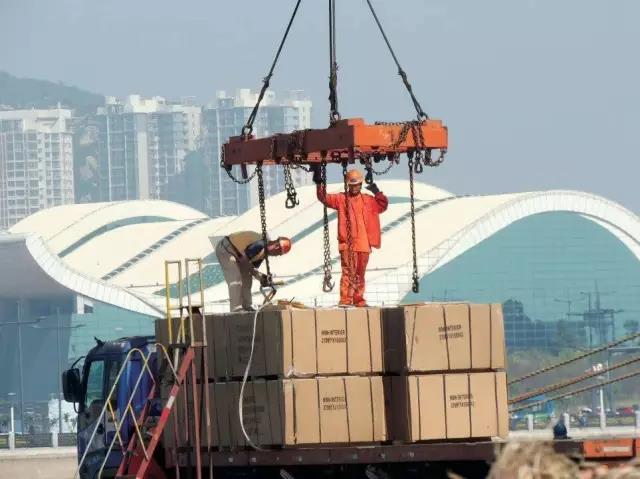
In their search for growth strategies, these Chinese entrepreneurs were typically fast and agile. Some of them developed diversified conglomerates, and there were others that decided on a narrow focus, taking the core competence approach. The results have been mixed.
Interestingly, some of them, through trial and error, discovered a third way of strategy development. We call it “multiple jumping”.
When these entrepreneurs see new opportunities evolving, even if they do not have all the capabilities to fully operate the new business, they decide if they should jump over or not.
So far, some of the companies that have jumped have been successful in latching onto the new business sector. Often, they will repeat the process when newer opportunities turn up. When these companies jump, they try to fill their capability gaps either through their own efforts or by collaboration with other companies, or by using both approaches.
This multiple jumping approach to strategy is different from a conglomerate approach because, despite their involvement in multiple sectors, these companies generally keep their original heritage as their core.
On the other hand, multiple jumping clearly defies the core competence approach, because these companies are willing to enter new areas of business without having the expected core competences established.
So, this multiple jumping approach is another way to think about strategy beyond the conglomeration and core competence approaches. We call it The Third Way.
It provides another way for companies to decide how they should develop their business strategies in a fast-growing, discontinuous operating environment abounding with fertile opportunities.
A prime example of a company that has successfully adopted this approach is Alibaba, which has interests in industries including healthcare, the media and consumer finance as well as its core e-commerce business. Coincidentally, US companies such as Amazon and Google have also grown through this approach.
As China’s operating environment continues to rapidly evolve, innovation and entrepreneurship are thriving. Companies are looking for even more inspiration for growth. Many entrepreneurs continue to look at the West, especially at the US, for inspiration in technology, management and investment models. Some are also examining Chinese historical philosophies for guidance.
Today, in addition to a growing number of consulting firms, business schools and training companies in China, many corporations have also set up their own “universities” or “academies”. Business executives, successful or not, are eager to share their experiences in running businesses and some have turned into modern philosophers.
Conferences and seminars organized around themes of business, innovation and transformation take place regularly in different cities throughout China. Airport bookstores, where business traveler traffic is heavy, stock a proliferation of business books. Videos showing various “experts” talking about the secrets of successful business are now commonplace.
Social media, in particular, has become a popular medium for people to share their points of view — freely critiquing others’ successes and failures, with or without any real business experience of their own. Online celebrities emerge from the corners and some have captured many eyeballs with their opinions on business trends and remarks on individual businesspeople.

A fair number of Chinese entrepreneurs are still relying on brute force and guanxi (relationships) to run their businesses, but increasingly, some regard knowledge as the key source for building their companies’ sustainable competitive advantages. To this end, they actively search for new ways of building businesses.
On the surface, these attempts may seem unsystematic and perhaps some will prove futile. But some are creating new patterns that could become cutting-edge thinking, and they could form a new cornerstone for business thought leadership that will bring about future inspirations for the rest of the world.
Edward Tse is founder and CEO of Gao Feng Advisory Company, a global strategy and management consulting firm with roots in China. He is also the author of China’s Disruptors (2015).
China Daily | Reform, Resilience, Progress and Innovation
By Edward Tse
January 2019
China has figured out its own development model without consciously knowing it
This article is published on the book The Sleeping Giant Awakes by China Watch Institute
The last 40 years of Reform and Opening-Up have brought incredible changes and progress to China, turning the image of the country upside down from a planned economy to one of the world’s most vibrant business landscapes.
While the central government didn’t attempt to change everything overnight—as the International Monetary Fund advised—it made continuous reform and opening the centerpiece of its governance.
With pragmatism and tangible results in mind, China has figured out its own development model without consciously knowing it. At the top, the central government’s guiding hand in Beijing sets goals and directions for the country, giving the rest of the country clear targets to follow. At the grass roots level, private sector entrepreneurs, who were given the opportunities to re-emerge, have become a major force in driving not only the growth of China but the upgrading of the global economy. In the middle, China’s local governments, in response to the central government’s direction and strategy, channel their resources and focus on areas of national and local priorities. The local governments often collaborate closely with entrepreneurs who bring innovative ideas to bear. As the local governments compete with each other, some of them also often collaborate in regional clusters.
This three-layer working paradigm, though not perfect, has indeed been proven to enable robust momentum driving progress forward and generate resilience for continued development. Between 1978 and 2016, China’s annual GDP growth averaged 9.7 percent, faster than the growth of any other country over the same time period and almost quadruple that of the US.
The symbiosis of state-owned enterprises (SOEs) and private-owned enterprises (POEs) in China’s dual economic structure is also a defining feature of the economy. On the one hand, SOEs take the initiative on nationwide mission-critical projects such as major infrastructure, utilities, natural resources, military and defense; while on the other hand, POEs are great at market-driven innovations, often enabled by technology, that address society’s pain points. While SOEs in many cases enjoy greater advantages in terms of policy privileges, resources and capital, and licensing rights, the private sector embodies more agile organizations, higher business innovative potential, as well as sensibility and responsiveness to market changes.
Though the dual economic structure encounters occasional glitches, the two sides complement each other well most of the time, often without knowing it, and use their respective strengths to generate synergy in society as a whole.
In the meantime, China has accelerated its pace of opening by liberalizing the market access of more key industry sectors. In June, Beijing unveiled a plan for easing foreign investment curbs on the banking, automotive, agricultural and heavy industrial sectors, which signals lower entry barriers and more opportunities for cross-border investors. China will also phase out ownership caps on businesses, including ship and aircraft manufacturing, power grids and some consumer goods sectors. Either in the context of the trade war or the critical juncture of industry restructuring, China has gathered more confidence in the resilience of its domestic businesses and is ready to embrace competition from worldwide, which, in turn, would further stimulate innovation and growth.
The de facto game changers of China, namely the entrepreneurs, have evolved in generations. At the end of the 1970s, the Chinese realized that not only was their economy underdeveloped but also the business mindset backward compared to developed nations. This dose of reality was a shock to those who had subscribed to the nation-state’s self-sufficient, long-standing utopian economy. This situation spurred a new sense of purpose among Chinese entrepreneurs—the desire to strive for success and show the world that they too could succeed. They thought to themselves, if Li Ka-shing and Bill Gates can become men of great wealth, why not me Although it’s been 40 years since the opening-up of China, this question of “Why not me” is still the key engine that drives the Chinese entrepreneurial spirit.

Source Google
At the same time, the size and fast-changing nature of China’s market allows companies to rapidly scale up. Leading Chinese companies are benefitting from high valuations that are based on favorable forward-looking expectations of China’s market potential. Over the past 20 years, plenty of capital needed to fund development and growth was made available through the public capital markets, either within or outside of China, as well as through plenty of venture capital, private equity and angel investors, fueled by the immense aspirations of the governments, entrepreneurs, and investors.
Nowadays, the new generation of entrepreneurs continues to inject vigor into the country. The Internet and technology sector—ranging from ride-hailing to e-commerce, robotics and artificial intelligence—grew twice as quickly as the overall gross domestic product in the past decade, according to Xinhua last year. Deloitte and China Venture, in a 2017 report, said that China accounts for more than a third of the total number of unicorns globally, and has become the world’s second largest birthplace of unicorns.
New dynamics are also emerging among entrepreneurs, who are getting younger and more geographically diverse. China Youth Daily reported in 2016 that the age of first-time young entrepreneurs in China averaged around 25; another study showed that although startups generally prefer top-tier cities, they are also reaching lower-tier cities such as Xi’an and Qingdao.
Women, in particular, are starting to rise to the entrepreneurial center stage. Last year, in the Forbes list of the world’s 56 selfmade women billionaires, there were 21 Chinese, accounting for 37.5 percent of the total. China’s femalemale ratio of an index measuring entrepreneurial activity is 0.87, above the global average of 0.7. The Total Early-stage Entrepreneurial Activity index, published by the Global Entrepreneurship Monitor, reflects the percentage of the 18-64 population who are either a nascent entrepreneur or an owner-manager of a new business.
Altogether, Chinese entrepreneurs dabble in various entrepreneurial pursuits while the Chinese society now accepts entrepreneurs who try and fail. Certainly, only a few would succeed, and much fewer would succeed at the first try, but failures are no longer stigmatized.
With President Xi Jinping’s declared goal of creating an innovation nation by 2030 and strategic goals like Made in China 2025, we expect more innovations from China. The country is now already the second-largest spender on research and development and accounts for 21 percent of the world’s total, according to the US National Science Foundation. From the grass-roots level, patents, trademarks and industrial design have soared in recent years. The World Intellectual Property Organization reported that China contributed to 98 percent of global growth in patent filings, more than the combined total of the US, Japan, South Korea and Europe.
The Fourth Industrial Revolution is imminent, and China is one of the leading nations. As new and emerging technologies like AI, IoT and Blockchain are here and 5G is just around the corner, the Chinese are fully embracing them to further enable innovation.
For example, to support higher levels of manufacturing productivity, China recognized the necessity of automated manufacturing, and added 87,000 industrial robots in 2016, slightly lower than Europe and the United States combined. Chinese growth in robotics is forecast to exceed 20 percent annually through 2020, according to the International Federation of Robotics.
The transition into this new era will have major implications for China and the rest of the world. For companies, new opportunities would at the same time mean greater risks and responsibilities. Today, many private companies are led by their owner-managers. Going forward, corporate survival hinges upon succession planning and transition. Having grown at a breathtaking pace in the last few years, large organizations, such as Didi, which was twice embroiled in safety scandals this year, need to have a clear value proposition and bear in mind their responsibilities—defined not merely as maximizing shareholder benefits but the intangible impact on the society at large. Both investors and management teams must understand and internalize the need for the company to demonstrate corporate leadership well beyond the narrowly-prescribed realm of financials, epitomize what a good corporate citizen really is and turn that into proper governance.
China will be at the front seat witnessing the turning point in the Fourth Industrial Revolution, perhaps ahead of most of, but not all other countries in the world. As the country continues to embrace multilateralism, naturally it will play an even larger and responsible role in future global governance. We expect China to step up further and take on global leadership, and even more and disruptive innovations to come from China’s businesses.
Dr. Edward Tse is founder and CEO of Gao Feng Advisory Company. One of the pioneers in China’s management consulting industry, Dr. Tse built and ran the Greater China operations of two leading international management consulting firms for a period of 20 years. He has consulted to hundreds of companies – both headquartered in and outside of China – on all critical aspects of business in China and China for the world. He also consulted to the Chinese government on strategies, state-owned enterprise reform and Chinese companies going overseas. He is the author of over 200 articles and four books including both award-winning The China Strategy (2010) and China’s Disruptors (2015) (Chinese version «创业家精神»).
Please follow my public wechat account if you want to read more articles EdwardTse_GF
China Daily | China’s Burst of Tech-enabled Innovation

By Edward Tse | China Daily Africa | Updated: 2017-12-08
AI, internet of things to change the way companies acquire, connect, communicate, interact and service customers
The fourth World Internet Conference, which just concluded in Wuzhen, Zhejiang province, attracted a large number of senior participants – ranging from government officials and multinationals to leading tech companies and academics – under the theme of “Developing Digital Economy for Openness and Shared Benefits – Building a Community of Common Future in Cyberspace”.
Top foreign tech company executives, including Apple CEO Tim Cook and Google CEO Sundar Pichai, along with the leaders of China’s internet giants – Jack Ma (Alibaba), Pony Ma (Tencent) and Robin Li (Baidu) – attended the conference.
For a long time, China has been viewed as a nation reliant on low manufacturing costs and products and services copied from the West. Very few people believed that China had the ability for innovation. However, its development has proved otherwise.
Since the beginning of this decade, innovation and entrepreneurship have become key drivers for China’s economic development. An increasing number of young Chinese entrepreneurs and their fearless experimentations in new technologies have emerged. And, to the surprise of many, some Chinese entrepreneurial companies, notably Tencent and Alibaba, are now in the league of the world’s most valuable companies.
So what drives innovation and entrepreneurship in China? I think it is the following seven key factors:
Why not me? The question of “why not me?” is a key engine that drives the Chinese entrepreneurial spirit. Young Chinese entrepreneurs, post-’80s and post-’90s, believe that if Jack Ma and Pony Ma can become men with great wealth, why not me? They are inspired by these legendary success stories, spawning a desire to strive for their own success. Armed with a fearless attitude toward failure, they are often very agile and responsive to market shifts.
Market opportunities provided by the State-dominated economy: State-owned enterprises have important roles to play in the Chinese economy, but they are usually big and slow to react in a fast-changing market that is marked by intense competition. This created immense opportunities for innovative private companies able to take advantage of this market gap.
Transformative and intense competition: It has taken several decades for China to gradually transform from a planned economy to a market economy, and will likely take another couple of decades more, if ever, for a complete transition. A number of sectors opened up during the transformation, attracting numerous players and igniting intense competition. Against this background, innovation is the best way for companies to enhance their competitiveness and to stay ahead of competition.
Chinese society’s pain points: During the transformation process, Chinese society’s pain points, which had been hidden from sight before, became readily visible. Entrepreneurs considered these pain points as golden opportunities for innovation. Many innovations came about for the sake of solving societal ills or easing the pressure created by societal pain points.
Prevalence of technology, especially wireless internet: Technology is definitely a major enabler for innovation. Smart devices debuted a decade ago and are now becoming a core part of Chinese’ consumers daily connected lifestyle. Wireless Internet, 5G network and artificial intelligence all provide tremendous disruption opportunities for innovators and entrepreneurs.
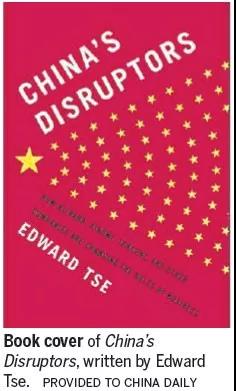
The massive scale of the Chinese market: The size and fast-changing nature of China’s market allow companies to rapidly scale up. At the same time, there is plenty of room for innovators and entrepreneurs to learn via trial and error. Leading Chinese companies are also benefiting from high valuations that are based on favorable forward-looking expectations of China’s market potential. This gives them the needed capital ammunition to support their growth.
Capital resources: The availability of venture capital and angel funds, both overseas and local, is another key driver of innovations in China. Chinese companies have greatly benefited from the vast sums of capital provided by both foreign and homegrown investors over time.
In a congratulatory letter to the this year’s conference, President Xi Jinping said deep integration is needed between new technologies, such as the internet, AI, big data and the real economy, in a bid to fuel growth of the digital economy and sharing economy in China.
Using AI as an example, China’s unique capacity among nations to combine strong top-down government directive (both at central and local government levels) with vibrant grassroots-level innovation and an entrepreneurial ecosystem bodes well for success in its AI development. China has positioned AI as a national strategic priority, aiming to gain first-mover advantage in the revolutionary AI technology to leapfrog foreign peers and to become a world leader in science and technology development. The State Council, China’s Cabinet, released a “New Generation AI Development Plan”, which declared the goal for China to become a global leading AI innovation hub with an industrial scale of over 1 trillion yuan ($151 billion; 127.7 billion euros; £112.6 billion) by 2030.
Not only is the central government very supportive of AI innovation; local governments in China are also devoting resources and investing heavily into AI technology innovation in a bid to gain regional competitive advantage. For example, Guizhou, one of poorest provinces in China, positions itself, with support from the central government, as China’s “Big Data Hub” and has attracted major companies, such as Apple, Alibaba, Tencent and Qualcomm, to set up new data centers. Guizhou was able to achieve 10.5 percent growth in GDP, which was the second-highest in China.
Local governments also have a “coopetition” mindset, willing to collaborate with cities in a cluster and region and grow together. For example, cities within the Guangdong-Hong Kong-Macao Greater Bay Area, such as Dongguan, Guangzhou and Shenzhen, have all been competing with each other for a long time, but they will also collaborate to incorporate AI into their development plans and leverage it as a key economic growth engine for the Greater Bay Area cluster.
The government’s favorable policies have further promoted innovations across a wide range of tech players. Leading internet giants such as Baidu, Alibaba and Tencent, rising startups like Face++ (cognitive services), iCarbonX (healthcare), Mobvoi (natural language processing) and SenseTime (computer vision), as well as unicorns like Didi Chuxing and Xiaomi, are either already adopting AI technology in their operations or investing in it.
Another key technology area in this year’s conference was the internet of things, a network connecting physical devices, such as vehicles and home appliances, and data. This technology can help to digitize a user’s offline activities, connect the isolated information and data together and generate insights from the big data.
Looking ahead, new technologies such as AI and IoT will fundamentally change the way companies acquire, connect, communicate, interact and service their customers. In the future, industry boundaries will become blurred, and the new technologies can help companies to build customer-centric organizations with ubiquity, segment of one, connectivity and interactivity. Tencent CEO Pony Ma gave a speech in which he said that, in the past, wireless internet solved the pain points of individual users, while in the future, internet companies with new technologies will enable different industries and solve their pain points.
There will be many challenges waiting for China along the way to reach its goal of taking a global leading position on AI or IoT. However, like anything related to technological innovation these days, it would be imprudent to rule China out.
The author is founder and CEO of Gao Feng Advisory, a global strategy and management consulting company with roots in China. He is also author of China’s Disruptors.
China Daily | China’s Three-Layered Duality Continues to Evolve
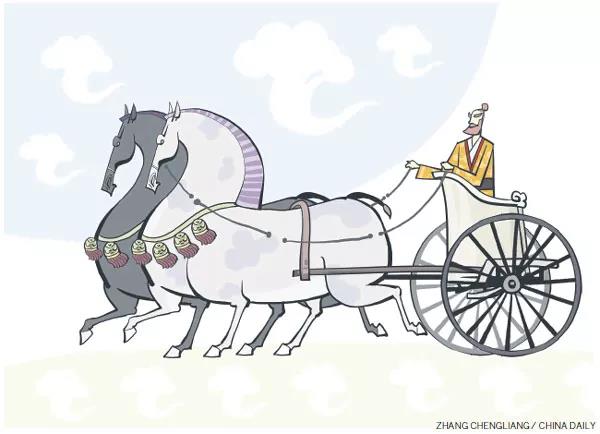
By Edward Tse | China Daily Africa | Updated: 2018-10-12
Working paradigm of nation’s economy has enabled robust momentum in driving progress and generating significant resilience
On Sept 27, during a visit to Liaoyang in Northeast China’s Liaoning province, President Xi Jinping stressed that China’s State-owned enterprises should continue to grow and develop. He added that the principle of having the Communist Party of China guiding the SOEs must be consistently followed.
On another occasion on the same trip, Xi stressed that, since the start of market reform and liberalization, the CPC Central Committee has always been supportive and protective of privately owned enterprises. China’s basic economic system must unwaveringly consolidate and develop the public sector, and unwaveringly encourage, support, guide and protect the development of the nonpublic sector, he said.
Are these stances regarding SOEs and privately owned enterprises contradictory to each other? How should we interpret the dual support by Xi for both types of enterprises?
The past 40 years of reform and liberalization have brought incredible changes and progress to China, turning the image of the country upside down, from a planned economy to one of the world’s most dynamic business landscapes.
Along the way, China has evolved its own development path, without consciously knowing it. At the top, the central government’s guiding hand sets goals and directions for the country, giving the rest of the country clear targets to follow. At the grassroots level, private-sector entrepreneurs have re-emerged and become a major force in driving not only the growth of China but also of the global economy. In the middle, China’s local governments, in response to the central government’s direction and strategy, channel their resources and focus on areas of national and local priorities. The local governments often collaborate closely with entrepreneurs who bring innovative ideas to bear. Local governments compete with each other as well as cooperate to form regional clusters. A good example is the Greater Bay Area, which consists of nine cities in Guangdong province, including Shenzhen and Guangzhou, as well as the special administrative regions of Hong Kong and Macao.

This three-layer working paradigm, while evolving, has enabled robust momentum in driving progress forward and generating significant resilience. Between 1978 and 2016, China’s annual GDP growth averaged 9.7 percent, faster than the growth of any other country over the same period and almost quadrupling that of the United States.
The symbiosis of SOEs and privately owned enterprises, in China’s dual economy structure, is a defining feature. SOEs take initiatives on the country’s mission-critical projects such as major infrastructure, utilities, natural resources, military and defense. Within a decade, for example, China was able to build the world’s most extensive high-speed railway network from virtually nothing, thanks to its SOEs – a feat that would probably not have been possible if left to the private sector. On the other hand, privately owned enterprises are great at market-driven innovations, often enabled by technology that addresses society’s pain points. While SOEs in many cases enjoy greater advantages in terms of policy privileges, resources and capital, and licensing rights, privately owned enterprises embody more speedy organizations, higher business innovation potential and more sensibility and adaptability to market changes.
Though the dual economic structure encounters occasional glitches with inherent conflicts at times – on many occasions, pundits asserted “guo jin min tui”, meaning “the state advances while the private sector retreats”, while other pundits asserted the opposite – the two sides of the economy for the most part complement each other, often without knowing it, as each takes on its respective role.
China’s entrepreneurs have evolved in generations. In the late 1970s, at the end of the “cultural revolution” (1966-76), the underdevelopment of the Chinese economy spurred a new sense of purpose among China’s newly emerged entrepreneurs – the desire to strive for success and to show the world that they, too, could succeed. Even today, this notion of “Why not me?” is still the key motivator that drives the Chinese entrepreneurial spirit.

Source: Internet
Today, younger generations of entrepreneurs continue to inject vigor into the country, and they are also more geographically diverse. China Youth Daily reported in 2016 that the age of first-time young entrepreneurs in China averaged around 25; another study found that although startups generally prefer top-tier cities, they are also reaching lower-tier cities such as Xi’an and Qingdao.
An earlier article in South China Morning Post said that the scale and influence of China’s private economy can be recapitulated by “56789” – contributing 50 percent of tax revenue, 60 percent of gross domestic product, 70 percent of industrial upgrades and innovation, 80 percent of total employment and 90 percent of the total number of enterprises.
With President Xi’s declared goal of creating an innovation nation by 2030, we will expect more innovations to come from China. The country is now already the second-largest spender on research and development and accounts for 21 percent of the world’s total, according to the US National Science Foundation. The World Intellectual Property Organization reported that China contributed to 98 percent of global growth in patent filings, more than the combined total of the US, Japan, South Korea and Europe.
The Chinese are fully embracing new and emerging technologies like artificial intelligence, the internet of things, blockchain and 5G to further enable innovations. The three-layers paradigm continues to manifest itself. Governments at central and local levels alike, as well as the private sector, are investing significantly in revolutionary fields. These technological breakthroughs will enable a higher level of automation, connectivity and intelligence, and will enable more game-changing business models.

Source: Internet
Recent research from Tsinghua University found that two-thirds of global investment in AI is going to China, enabling a 67 percent growth in the industry in just the past year. A report by ABI Research says that Chinese AI startups have already overtaken their US counterparts by raising nearly $5 billion (4.3 billion euros; £3.8 billion) in venture capital funding in 2017. In November, Shanghai announced a new plan outlining a road map toward becoming a major national AI hub.
Around 450 blockchain technology companies have been registered in China, according to the Ministry of Industry and Information Technology. The regulatory attitude toward blockchain has turned from skepticism to acceptance and now to support. Throughout this year, the Chinese government has funded multibillion-dollar initiatives to develop blockchain-based networks, with Hangzhou’s city government investing a total of $1.6 billion in the Global Blockchain Innovation Fund in April.
China will be in the front seat witnessing the turning point to the Fourth Industrial Revolution, characterized by cutting-edge technologies that are blurring the lines between the physical, digital and biological spheres, perhaps ahead of most of, but not all, other countries in the world. As the country continues to embrace multilateralism, naturally it will play an even larger and more responsible role in future global governance.
We expect China to step up further and take on more global leadership in an increasingly turbulent and uncertain world, and even more and disruptive innovations to come from China’s businesses through a unique, three-part duality construct.
The author is founder and CEO of Gao Feng Advisory Co, a global strategy and management consultancy with roots in China, and author of China’s Disruptors. The views do not necessarily reflect those of China Daily.
China Daily | ODI Outlook Promising Overall for 2018
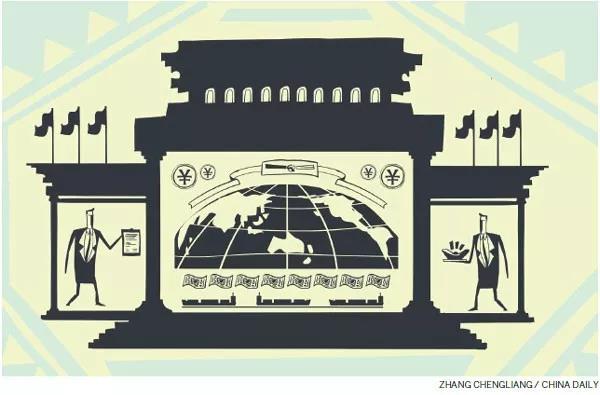
By Edward Tse | China Daily Europe | Updated: 2018-03-09
Despite roadblocks ahead, there will be more opportunities for startups involving Chinese and outbound entrepreneurs
After the peak in 2016, China’s outbound direct investment in 2017 slowed significantly and recorded its first annual drop since 2006. According to the Ministry of Commerce, China’s total outbound direct investment in nonfinancial sectors declined by 29.4 percent year-on-year to $120 billion (97.5 billion euros; £87 billion) in 2017. However, if we take the last five years’ data (from 2012) and take out the 2016 data, the cumulative annual growth rate is actually around 10 percent.
2016 was probably an aberration, as there was a rush by a number of Chinese companies to invest feverishly overseas, causing concern for the Chinese government about the abnormal outflow of capital from China.
Since late 2016, the Chinese government has exercised more stringent controls on capital outflow, and it appears that undisciplined overseas investment is now largely under control.
So what do we expect to see in terms of China’s outbound investments in 2018, in particular as it relates to its two important trading partners and investment destinations: North America and Europe?
Two recent failed deals involving Chinese companies investing in the United States made headlines. US telecom company AT&T walked away from a deal with Huawei, a Chinese telecom equipment and smart device maker, under pressure from the US Congress.
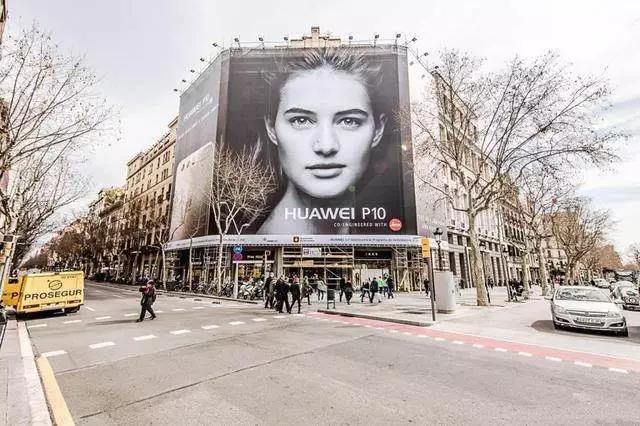
Source: Baidu.com
The US government also rejected the intended acquisition of MoneyGram, a US money transfer company, by Ant Financial, an affiliate of Chinese internet giant Alibaba. Media have reported that on Capitol Hill, there is a prevailing wind of “trust deficit” regarding the US-China relationship on trade and investment.
Similarly, China’s investments in Europe have encountered obstacles from the European Union. Last year, the German government adopted stricter regulations on non-EU countries’ investment in German companies, especially in such crucial areas as energy, infrastructure and high-tech. Also, a few months ago, the European Union launched a probe into China’s high-speed train project from Belgrade to Budapest, alleging that Chinese companies won public contracts without open bidding.
Deals triggering “national security” concerns from the US and EU governments’ standpoint will always raise red flags, and with regard to Chinese companies’ investment, the theory goes like this: The Chinese government is behind everything that Chinese businesses are doing, and State-owned enterprises, because of their government ownership, act on behalf of the Chinese government. By implication, they have motives that are not trustworthy. In addition, the Chinese government employs strong industrial policies that create an unlevel playing field for companies and countries, according to the theory.
I can’t say these arguments are completely fiction. However, this is certainly not the complete picture.
While the State sector is certainly prevalent in China, the non-State sector is actually becoming more important and powerful in its own right. By 2016, approximately 56 percent of China’s total outbound investment in nonfinancial sectors was made by non-State owned companies, compared with only 19 percent a decade ago. Additionally, according to Chinese government statistics, the non-State industrial sector’s revenue in 2016 was close to four times that of the State sector. About the same ratio also applies to total profit.
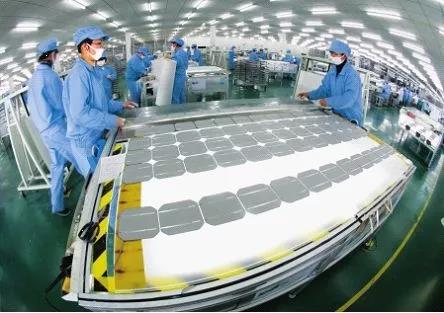
Source: Baidu.com
Based on a study by the Institute of Population and Labor Economics at the Chinese Academy of Social Sciences, China’s new economy – internet-based businesses ranging from e-commerce to car-hailing services – grew twice as quickly as China’s overall GDP in the past 10 years to 2016. By definition, these new economy companies are mostly, if not entirely, private-sector companies. Entrepreneurship and business innovation are thriving in China, and they come mostly from the private sector.
The Chinese government has applied tighter supervision on Chinese companies’ outbound investment to prevent irrational investments, such as in the areas of real estate, hotels and entertainment.
However, the government continues to encourage Chinese companies to “go abroad”, as long as the reason is considered legitimate. One area in which the Chinese government is particularly supportive of Chinese companies’ participation is the Belt and Road Initiative. Although nonfinancial sector outbound investment slumped by 29 percent in 2017, investment in Belt and Road countries increased by 3.5 percent year-on-year to $14.3 billion, accounting for 12 percent of total outbound investment.
To many Chinese companies, the US and Europe are attractive (and in some cases necessary) markets, and the conditions for manufacturing are becoming more favorable. China’s direct investment in North America has grown at a cumulative annual growth rate of 25.8 percent over the past five years.
For example, Triangle, China’s third-largest tire manufacturer, is going to invest in a $580 million plant in North Carolina this year. Keer Group, a Chinese textile producer, plans to invest $218 million over the next five years to expand the capacity of its facility in South Carolina. Additionally, it has been reported that China’s investment in Germany reached a peak in 2017.

Source: Baidu.com
Recently, Huawei confirmed its long-term commitment in the United Kingdom with a 3 billion euro ($3.7 billion; £2.7 billion) investment. Also, China launched a 3 billion yuan investment fund, backed by State-owned asset manager Shanghai International Group, during British Prime Minister Theresa May’s recent visit to Shanghai. The fund will invest in European manufacturing companies in the medical, chemical and environmental protection sectors, helping Chinese companies to upgrade their manufacturing capabilities.
As China’s innovation and entrepreneurship continue to thrive, there will certainly be more opportunities for startups involving both Chinese and outbound entrepreneurs (especially in the US), as well as for venture capitalists. Technology, especially AI, will increasingly be embraced for enabling innovations by entrepreneurs.
In the past five years, China’s outbound direct investment has grown rapidly in technological industries such as information communication, software and information service (with a cumulative annual growth rate of 53.9 percent). Both the US and China are now leading the world in the development and application of AI, and this trend will likely continue to accelerate.
The interactions between China and the US at the startup and investors’ levels are actually taking place intensively, as there is so much to share and many opportunities to jointly pursue. Much of this has already manifested in cross-border investments between the two countries.
However, roadblocks exist in cross-border trade and investments. The US government has introduced policies to restrict China’s investment in some areas of high-tech, especially when it is viewed as potentially infringing on US national security. It was reported that three key European countries – Germany, France and Italy – have drafted a legal initiative for more rigor in investigating and restricting investments from China.
It would be naive to expect plain sailing for the China-US and China-Europe trade and investment relationship this year. However, I don’t believe all will be bad, either. There will be areas of tension and differences in points of view and policies, but there will also be areas of collaboration and alignment.
“Coopetition” is perhaps the best way to describe the nature of China’s relationship with the US and Europe going forward. After all, it won’t be – and shouldn’t be – a zerosum game, especially not in today’s world of increasing connectivity.
Edward Tse is founder and CEO of Gao Feng Advisory Company, a global strategy and management consulting firm with roots in Greater China, and author of China’s Disruptors.
China Daily | R&D Driving China’s Innovation Speed
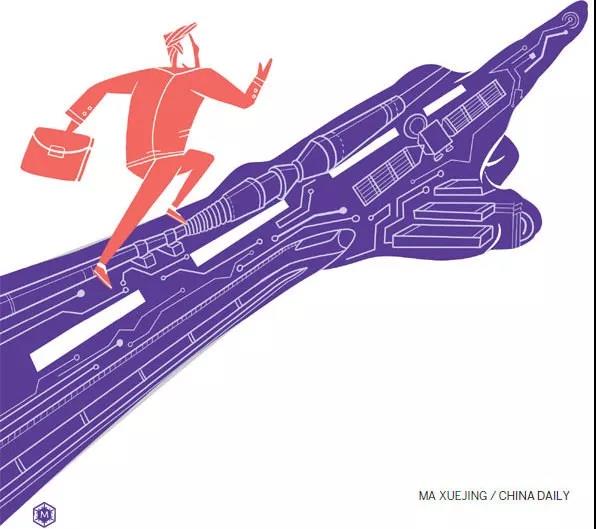
By Edward Tse | China Daily Africa | Updated: 2018-02-16
The central government’s blessing of entrepreneurship has created a vibrant environment that began at the grassroots
At the beginning of China’s opening-up and reform 40 years ago, the country’s reform architect, Deng Xiaoping, put forward that “science and technology are the primary productive forces”. At the 19th National Congress of the Communist Party of China in October, General Secretary Xi Jinping proclaimed that “innovation is the primary force driving development”.
Behind both of these statements is the philosophy that research and development as well as innovation results in generating key capabilities for the country. R&D investment is generally viewed across the world as the backbone of a globally competitive and innovation-driven economy.
Late last year, the European Commission released “The 2017 EU Industrial R&D Investment Scoreboard”, which covered 2,500 companies from 43 countries that invested the largest amount in research and development last year. These companies recorded a total investment of 741.6 billion euros ($909 billion; £657 billion) in R&D, a 5.8 percent year-on-year increase.
Among the companies covered in the Scoreboard report are 376 Chinese enterprises. Their R&D investment grew by 18.8 percent year-onyear in 2016, compared with a 7.2 percent increase by 822 US companies and a 7 percent increase by 567 European Union companies.
While most of the top companies in the report are from the West, Huawei, a China-based telecom equipment and smart device manufacturer, leapfrogged to sixth place, registering 10.4 billion euros in R&D investment. Huawei’s ranking advanced by more than 200 places between 2004 and 2016. Chinese internet giants Alibaba and Tencent also entered the top 100 on the list.
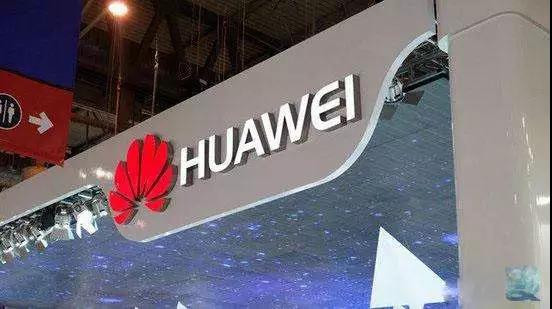
Source: Baidu.com
Chinese companies are also well known for tech innovation in such areas as drones, electric vehicles, autonomous driving and artificial intelligence. DJI, a Shenzhen-based company, has a global market share of around 70 percent in consumer drones. NIO, a Chinese electric vehicle startup, developed the fastest electric sports car, the EP9, within 18 months and broke the world lap record at the Nurburgring Nordschleife track in Germany. In terms of AI, a Chinese company, Face++, developed advanced facial recognition technology that is widely used in the financial technology, smart retail and many other industries. This technology, now used in more than 200 countries, processes over 30 million requests each day. SenseTime, a Chinese AI company founded in 2014, focuses on innovative computer vision and deep learning technology. In July last year, the company successfully raised the largest single-round investment in AI globally, at $410 million.
For a long time, China was viewed as a nation that relied on low manufacturing costs for exports. And Chinese companies were labeled “copycats” by the West. Very few people believed that China had the ability to innovate. However, the country’s development over the past decade has proved otherwise.
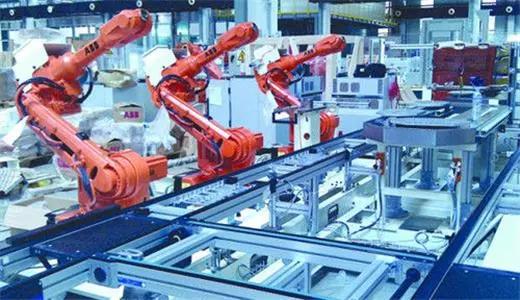
Source: Baidu.com
In fact, innovation is thriving in China. MIT’s Technology Review included nine Chinese companies such as iFlytek, Tencent, Face++ and DJI in its 2017 list of the Top 50 Smartest Companies. So what caused China’s innovation and the entrepreneurship that goes with it to take off? I think it’s because of the following reasons:
1. “Why not me?”: At the end of the 1970s, during the onset of China’s era of reform and opening-up, the Chinese discovered that not only was their economy backward and undeveloped compared with the economies of the developed nations, but the gap between the Chinese economy and those economies was vast. Against this background, Chinese entrepreneurs were spurred by a new sense of purpose and the desire to strive for success and show the world that they, too, could succeed. Although it’s been 40 years since China’s opening-up began, this question of “why not me?” is still the key driver behind the Chinese entrepreneurial spirit.
2. Market opportunity provided by the State economy: For a very long time, China’s economy was dominated by State-owned enterprises. In a market defined by fast changes, intense competition and the need for innovation, SOEs are usually slow to react. Many innovative companies have taken advantage of this market gap and have benefited with extraordinary growth.
3. Transformative and intense competition: China’s process of shifting from a planned economy to a market economy is gradual and will take time. In this process, a wide range of sectors have opened up and, coupled with the allure of the massive China market, we see players from all over the world igniting intense competition. This state of hyper competition forces companies to innovate in order to stay ahead.
4. Chinese society’s pain points: In the process of transformation, pain points that had previously been hidden are now in plain sight, and they provide entrepreneurs with opportunities for innovation.
5. The rise of technology: With the wireless internet, smart devices and social media becoming a core part of the everyday life of Chinese consumers, tremendous disruption opportunities are provided for innovators and entrepreneurs alike.
6. The massive scale of the Chinese market: The size and fast-changing nature of China’s market allows companies to rapidly scale up. At the same time, it provides a platform for innovators and entrepreneurs to learn via trial and error. Leading Chinese companies are also benefiting from high valuations that provide them with the needed capital ammunition to support their growth.
7. Capital resources: Over the past 20 years of China’s development, many venture capital companies and angel investors have benefited from exceptional returns on their investments in China. Regardless of whether these investors came from abroad or were homegrown, Chinese companies have benefited greatly from the vast sums of capital these investors have provided over time.
Against this backdrop, China’s development model plays a crucial role. From the top, China’s central government actively directs the country’s economic development with great results. In this context, the central government has positioned innovation and entrepreneurship as a key national initiative, and with this blessing, a vibrant innovation and entrepreneurial environment began at the grassroots level. In addition, various local governments across China are both competing and collaborating with each other, providing additional impetus for innovation.
The author is founder and CEO of Gao Feng Advisory, a global strategy and management consulting company with roots in China. He is also author of China’s Disruptors.
China Daily | E-mobility Alters Auto Industry Dynamics

By Edward Tse and Bill Russo | China Daily Europe | Updated: 2017-12-15
Competing no longer just about physical hardware, but also the capability to build a digital ecosystem relationship with consumers
The electric vehicle market is growing rapidly in China and is now outpacing its Western counterparts. Already the largest auto market in the world, China is now also the largest electric vehicle market. It is also the largest car market for many global automakers, including Volkswagen, BMW, General Motors and Mercedes-Benz. As a result, it is becoming essential for these companies to follow China’s mandate to electrify transportation.
China’s EV policy is largely an outgrowth of the nation’s desire to secure the energy resources needed to power China’s economic development, along with a desire to level the competitive playing field with global automakers who have long dominated the auto industry with the intellectual property related to conventional fossil-fuel-based propulsion technologies. China’s electrification plans are designed to build a globally competitive domestic set of capabilities that help establish China as the leading supplier of the raw materials and products needed to repower transportation.
Electrification will also permit China to alter its energy mix and expand its use of renewable energy sources. In addition, electrification provides China with an opportunity to establish leadership in segments where foreign companies do not have a deeply rooted technological advantage. China has selected new energy vehicles, which include battery electric vehicles and plug-in hybrid electric vehicles, for its electrification push, since they offer Chinese companies a chance to leverage China’s favorable EV policies and large market scale to secure a place of strength as these enterprises strive to become global electric carmakers.
For these reasons, the Chinese government is using a variety of incentives to promote and support development of the EV industry. These include purchase subsidies as well as tax and license plate exemptions. In September, China announced its intention to ban the sale of fossil-fuel-powered vehicles, and regulators are working on an implementation timetable. There is also a strong correlation between license plate restrictions and EV penetration for cities that have implemented such measures. By simply making it easier and cheaper to get a license plate, China has significantly expanded the electric car population in these cities. A carbon trading program will be phased in starting in 2019, and this will push automakers to add more EVs to their product mix in order to avoid a tax penalty.

Source: Baidu.com
Facing these dynamic changes, local and foreign original equipment makers are accelerating their investments in EV product development. Emerging disruptors (Nio, Byton), hardware innovators (Tesla, BYD) and traditional experimenters (VW, Ford) are now seeking a place in China’s EV competitive landscape. They are competing with, as well as collaborating with, each other, as the original competitive advantages of traditional carmakers can no longer guarantee success in the new “e-mobility” business model.
Competing in this new business model is no longer just about the engineering of physical hardware, but also includes the capability of building a digital ecosystem relationship with consumers, especially in a market like China where companies like Baidu, Alibaba and Tencent are actively investing in future mobility technologies around connected, electric and autonomous cars.
NIO, a Chinese EV startup backed by Tencent, has raised more than $1 billion (849 million euros; £746 million) and will release its first mass-production EV, the ES8, early next year. Tesla, a global pioneer in the electrification of transportation, is planning to build a wholly owned factory in Shanghai’s Pilot Free Trade Zone. Tencent, which now owns 5 percent of Tesla, is also investing in NIO and Byton in the race to dominate the future of mobility.
Tencent is a co-founder (with Alibaba) of Didi Chuxing, China’s top mobility service provider, and is also the lead investor in Mobike, a leading bike-sharing mobility platform. The internet companies believe that connected, electric and shared mobility is an integral part of Chinese consumers’ connected lifestyle. By leveraging its vast insight and big data relationship with its users, Tencent aims to provide more-tailored mobility solutions to the market. E-mobility is not just about the vehicle hardware, but also about the broader digital ecosystem relationship with the everyday users of the mobility services platform.
There is already a strong indication that the rise of connected, on-demand mobility is accelerating EV adoption in mobility services fleets. In a sustainable energy summit sponsored by the United Nations and the Global Energy Interconnection Development and Cooperation Organization, Didi CEO Cheng Wei said the future of transportation “is new energy vehicles, and ride sharing will be a key link in promoting new energy on the road.” He aims to have 1 million EVs on Didi’s platform by the end of the decade, which will account for around 20 percent of the total number of EVs in China by 2020. Didi has also partnered with NEVS, a Sino-Swedish venture that will manufacture electric vehicles in Tianjin for the ride-hailing giant.

Source: Baidu.com
EV technology developments are paving the way for large-scale electrification of transportation. Anticipating this, Chinese enterprises are deploying a massive number of charging facilities, with a government target of a 1:1 EV-to-EV charger ratio by 2020. Improvements in battery chemistry and other potential disruptive technologies like wireless charging are also anticipated, which will further accelerate the transition.
For more than 30 years, China’s auto policy has required foreign original equipment manufacturers to establish joint ventures with local partners in order to access the market. However, in the age of e-mobility, industry dynamics are being fundamentally altered. Increasingly, Chinese companies are creating product and digital service brands that shift the focus from the hardware to the ecosystem of services that are derived from the hardware. In this new digitally enabled business model, Chinese companies are no longer following, but rather leading, the auto mobility revolution.
Edward Tse is founder and CEO and Bill Russo is managing director of Gao Feng Advisory Company, a global strategy and management consulting company with roots in China.
China Daily | Tapping Growing Potential of AI Industry

By Edward Tse/Jackie Tang | China Daily | Updated: 2017-10-17
The global artificial intelligence market has experienced explosive growth in recent years, and this game-changing technology is now considered the “next big thing” after the mobile internet.
AI has a long development history but recent breakthroughs have led to a new inflection point. Advances in deep learning neural network algorithms, alongside improved computer processing power, and the abundance of big data that serves as valuable training data are all contributing to the rise of the AI industry.
China’s AI industry has been growing in an exponential manner. According to Tencent Research Institute, the number of AI companies has increased more than tenfold over the past 10 years, from 57 AI companies in 2007 to 592 by June 2017. Remarkably, the number of newly established AI startups in 2015 was equivalent to the total number of AI start-ups from 1999 to 2012. In terms of fundraising, according to The Economist, Chinese AI companies received $2.6 billion investment from 2012 to 2016 while US peers received $17.9 billion over the same period. However, China has been catching up quickly in recent years.
The Chinese government has positioned AI as a national strategic priority. China, earlier seen as a technology development laggard, aims to become a world leader in AI to drive its economic transformations with it. In the most recent government policy document outlining the New Generation AI Development Plan, the State Council, the country’s Cabinet, has declared an ambitious goal of becoming a world leader in AI innovation with a market size of over 1 trillion yuan ($151.86 billion) by 2030. Policies such as Made in China 2025, the Three-year Guidance for Internet Plus AI plan, and the New Generation AI Development Plan are all top-down initiatives aiming to take the nation’s AI technology forward. Furthermore, local provincial and city governments are also offering preferential policies and generous financial incentives to AI start-ups. For example, the city of Tianjin recently set up a 30 billion yuan fund to support the local AI industry.
Data is the key to unlocking the potential of AI development. With 751 million internet users and 724 million smartphone users, Chinese are embracing a 24/7 connected lifestyle and adopting all kinds of new digital products and services. Their ubiquitous connectivity has led to tremendous amount of data that can be further monetized. And with the massive amount of training data sets as input, the AI algorithms are continuously self-tuning and improving. Companies are now able to leverage AI-enabled tools to develop a more comprehensive and dynamic understanding of their customers and competitors.
This vibrant innovation and entrepreneurial ecosystem has also fueled China’s AI development. Chinese AI-based patent applications grew 186 percent between 2010 and 2014, a huge increase from the previous five-year period. Also, in the past two years, all the top-performing teams in the ImageNet Large Scale Visual Recognition Challenge, an influential AI computer vision contest, were Chinese, while half the teams were Chinese-based. Meanwhile, Internet giants such as Baidu, Alibaba and Tencent, along with rising startups like Mobvoi, iCarbonX, Megvii and SenseTime, and unicorns like Didi Chuxing and Xiaomi are all investing in or experimenting with AI technology.
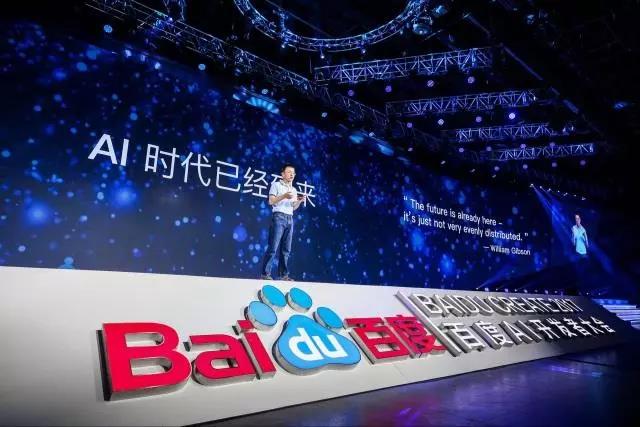
Source: Baidu.com
Baidu is one of the major leaders in AI development in China. It established the Institute of Deep Learning in 2013 and the Silicon Valley AI Lab in 2014. In 2017, Baidu announced a shift in its strategy from mobile-first to AI-first, and recruited Qi Lu, a former executive vice president at Microsoft, as its new COO. In particular, it has launched an open-source platform for autonomous driving solutions, namely Project Apollo, to transform the global research and development landscape of self-driving vehicles.
Yet, China’s AI industry still faces major challenges. First, China’s academia is not doing much in fundamental scientific research, especially in the areas of advanced computer algorithms and computing infrastructure. So far, the majority of groundbreaking research is still being done in the West. Second, AI startups are good at launching new products and features to satisfy unmet market demand. However they primarily rely on business model innovation rather than technology innovation. Third, governments and venture capitalists tend to provide more incentives to commercial applications of technology over fundamental technology research, which takes more time and involves more risks.
The success of China’s ambitious goal to become a world leader in AI by 2030 will hinge on the nation’s innovation capabilities and long-term strategic vision. Could China eventually achieve global leadership in AI? Like everything that is related to business and technology innovations these days, it would be imprudent to count China out.
Edward Tse is founder& CEO, Gao Feng Advisory Company, a global strategy and management consulting firm based in China and author of China’s Disruptors.
Jackie Tang is a consultant with the firm.
China Daily | Capturing China’s Middle Class Potential
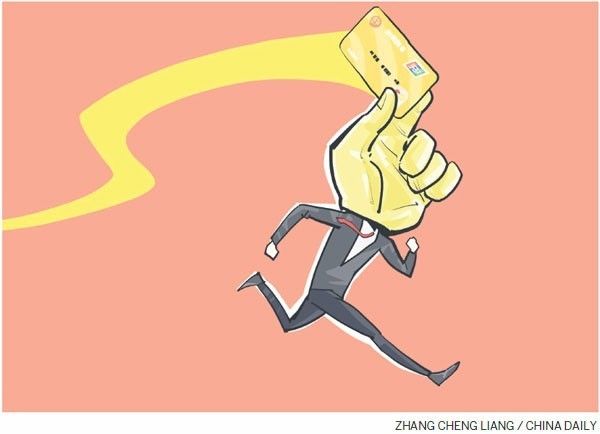
By Edward Tse | China Daily Europe | Updated: 2017-08-04
Success will depend on how much and how fast companies can adapt to new realities presented by this rapidly emerging sector
The emergence of China’s middle class is one of the greatest economic stories of the 21st century and a game changer for the global markets. This phenomenon has been written about by a wide range of sources, from investment banks such as Goldman Sachs to academic think tanks like the Center for Strategic and International Studies.
In a recent article titled “How well-off is China’s middle class?”, CSIS notes that in 2002, China’s middle class was only 4 percent of its population, and by 2012 that number had climbed to 31 percent – encompassing more than 420 million people – and is expected to reach 550 million by 2022.
The enormous purchasing power of this bloc is already creating new records on various fronts: auto purchases (last year, 23.9 million cars were sold in China, compared with 17.5 million in the United States); global travel (Chinese spent over $250 billion – 213 billion euros; £191 billion – abroad); and online purchases (650 million orders totaling 17.8 billion were shipped on Alibaba’s 2016 Singles’ Day).
China’s middle class is not only growing in purchasing power, but also enhancing its purchasing mindset. They are “trading up” for lifestyle products and services, becoming increasingly sophisticated and aspiration-driven. Purchase decisions are no longer made based on brand or social status only, but also the associated lifestyle values and the desire to express individualistic pursuits and dreams.
The emergence of China’s growing middle class is not just a China story, but increasingly a global one, and this has major implications for foreign multinational companies and Chinese companies alike.
With the increasing number of Chinese outbound tourists, multinational companies have realized that their “China strategy” is no longer solely about winning over the middle class’s wallets in China, but also about capturing the overseas spending of Chinese consumers abroad. Whether it’s offering Chinese digital payment solutions like Alipay or WeChat Pay in a Parisian boutique, or directly selling products from their global product portfolio through cross-border e-commerce, companies are facing massive shifts in the new consumer landscape.

source: Baidu
As consumption power grows in China, attempts by foreign and domestic companies to tap into the middle class’s demands seem to be mixed. Players that once believed themselves to be unassailable titans in their respective markets often find their positions increasingly tenuous. They are unable to fully acknowledge the new dynamics and strategic implications of the middle class and the overarching China context.
Many multinational companies tend to copy and paste their global strategy to China, believing models that worked in other markets can translate equally well to the China market. Companies that were successful in winning previous generations of Chinese consumers often fail to understand the differences between the older consumer generations and the new middle class, as well as the underlying drivers of demand.
China’s middle class is not only growing in purchasing power but also enhancing its purchasing midset
This lack of an understanding of the China context and an awareness of the need to adapt locally puts these companies at serious risk. On the other hand, companies such as Nike and Starbucks have found great success in China because they are able to tailor their products and their brand communications in a way that reverberates with China’s middle class. Starbucks’ brand in China has come to represent the sophistication and worldliness that China’s middle class craves, while Nike has become a symbol of China’s middle class’s desire for health and well-being. These companies are not merely selling products, but selling aspirational values and dreams.
China’s middle class is dynamic and rapidly evolving. Several drivers of middle class behavior stand out: technology, communication and geographic diversity.
Technology has become highly prevalent in China, from mobile internet to artificial intelligence. Chinese consumers are more digitally connected than any other country today, not just in information gathering but also in transactions, entertainment and communications. These elements will not only continue to shape new demand patterns, they will also enable new capabilities for suppliers to offer more personalized products and service offerings that address the demands of the Chinese middle class.
Increased communication is taking place with the benefits of the proliferation of smartphones and mobile internet. Consumers are now forming online communities and sharing information to different degrees of separation. The emergence of new social platforms has created new forms of online key opinion leaders and online celebrities, who have become new brand advocates and customer contact points between brands and consumers. Social media have become a ubiquitous mechanism for interactive and open communications with consumers.
The new generation of Chinese middle class consumers is becoming more geographically diverse. In the past, wealth and consumption were virtually limited to first-tier cities such as Beijing, Shanghai and Shenzhen, and some second-tier cities located mainly on China’s east coast. The current middle class can be found increasingly throughout China, from the traditional centers of wealth on the east coast to the lower-tier cities of China’s interior, even extending to the rural areas experiencing pseudo-gentrification due to the Chinese government’s New Rural movement.
Business-to-consumer companies that want to be successful in China need to go back to the fundamentals of their strategy and examine three key elements for connecting with the new Chinese consumers in the digital age: “Segment of One”, communities and interactivity.

source: Baidu
With technology enablers, instead of segmenting product-markets using a finite number of segments, companies can increasingly identify consumers on an individual basishence “Segment of One” – and build connectivity with the middle class consumers on an individual level.
On the other hand, China’s middle class consumers are also gravitating toward communities, often through virtual means, where they are able to express their own aspirational goals and lifestyles with other individuals that share the same desires. Jiang Xiao Bai, a young local brand of baijiu (traditional Chinese white spirit) was able to successfully win over Chinese millennials by building a community around the lifestyle that Jiang Xiao Bai depicts, which speaks directly to the dreams, desires and hopes of China’s millennials.
Online word-of-mouth has become a critical element of the Chinese middle class’s purchasing journey as they look to others’ assessments to supplement their own decisions. In addition, the new Chinese consumers are also asking for two-way communications with the companies. They want their views and input to be heard and to be taken into account by the companies so the companies can adjust their product or service offerings on a frequent and consistent basis.
From smartphones to international hospitality, the swiftly evolving Chinese middle class will bring major opportunities for domestic and foreign companies alike. The scale, speed and intensity of this phenomenon are overwhelming. However, the demand patterns of these consumers are evolving rapidly and their behavior will require companies to undertake a drastically different approach from past efforts.
To what extent companies can capture the rightful potential of China’s middle class is a function of how much and how fast companies are able to adapt to the new realities. Surely, some of them will succeed, but many of them won’t.
Edward Tse is founder and CEO, Gao Feng Advisory Co, a global strategy and management consulting company with roots in China. He is also author of China’s Disruptors.
China Daily | Are We Ready for the New Revolution?
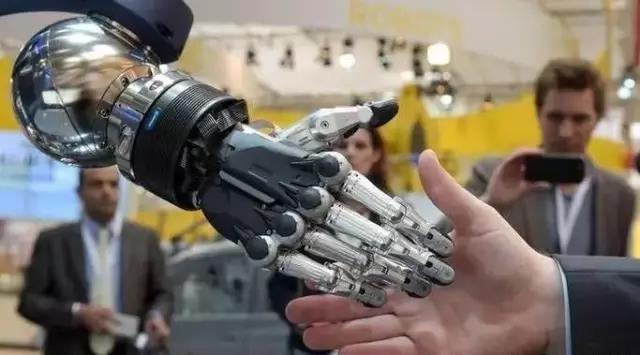
By Edward Tse | China Daily Europe | 2017-06-30
Technological advances are about to bring massive changes that some nations will cope with better than others
A while ago, a host of voices – including some leading management consulting firms – predicted a significant paradigm shift in manufacturing. They claimed that manufacturers, fed up with rising labor costs in China, would pack their bags and move back to America.
This “reshoring” movement, they said, would cripple China’s competitiveness in manufacturing. In a small way, these people were correct. Labor-intensive, low value-added manufacturing such as garment and toy manufacturing did indeed move out of China to developing nations such as Vietnam, Cambodia and Bangladesh. However, China was able to retain the type of industry the United States hungers for – high value-added manufacturing. The massive “reshoring” wave never materialized, or at least it hasn’t yet.
Whereas the original predictions were based on the rudimentary argument that focused on labor costs, it ignored the much more important, bigger picture. High value-added manufacturing is rooted in China because of an intricate ecosystem that includes industrial clusters, infrastructure and logistics. This ecosystem has fed the world’s increasing appetite for more “connected” and sophisticated devices, which not only favors technologically involved manufacturing staying in China, but also promises its growth.
According to market research company IBIS World, for the five years up to 2016, manufacturing of smartphones in China grew on an annual basis of 40.6 percent and was valued at $126 billion (110 billion euros; £97 billion) in 2016. Tesla, the world’s leader in electric vehicles, is planning to open a plant in China. These are just a few examples of a broader trend of China becoming an epicenter for technologically sophisticated projects.
To understand this manufacturing macro trend, we must examine it within the context of China. There are two forces concurrently at work. From the top down, the Chinese government is driving national policies such as Made in China 2025 with the goal of cementing the country’s position as the global hub of technologically sophisticated, high value-added manufacturing. From the bottom up, China’s thriving innovation and entrepreneurship are major engines fueling exponential growth for the country. China’s entrepreneurs are rapidly adopting more state of-the-art technology, from industrial robotics to 3-D printing, in a drive to be better than others in manufacturing. Even though not all of these entrepreneurs will be successful, some will and, given China’s sheer scale, a small percentage of a very large number is still a large number.
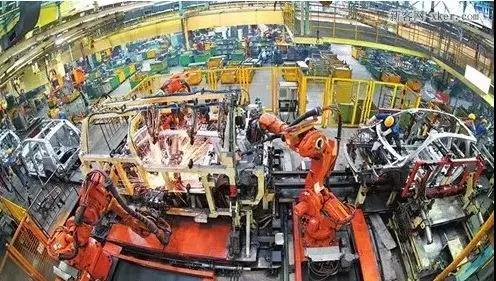
source: Baidu
This dual drive sets the foundation for China’s probable up-and-coming leadership position in the Fourth Industrial Revolution. China is already the world’s leading market for robotics. Local manufacturers are investing heavily in automation technologies, and China’s shift toward a consumption-based economy has sparked a massive shift toward smart and adaptive logistics systems and supply chains. Furthermore, China has become a global center in the development of artificial intelligence, big data and other next-generation technologies.
However, the disruption that will be created by the Fourth Industrial Revolution, while bringing opportunities, will also bring about major challenges. The factory of the Fourth Industrial Revolution will likely be nearly or completely automated. Countries where a sophisticated manufacturing sector now employs large numbers of the working class could find themselves with social issues such as widening gaps in income and standard of living between a small creative, educated class that benefits from these innovations and the population now made redundant by the technology.
Innovations will also create new job opportunities, in the way online marketplaces like China’s Taobao have created new opportunities for a large number of small to medium-sized enterprises across the country. The big question is always whether the jobs created are sufficient to offset the loss of those in other areas. Resolving this and other potential issues resulting from the Fourth Industrial Revolution will require governments to take innovative approaches to the welfare of their citizens.

source: Baidu
The Fourth Industrial Revolution offers both fantastic opportunities and serious quandaries. It has the potential to take global commerce to new heights, but will also put a magnifying glass on the structural weaknesses of 20th century nations in a 21st century world. Is the world ready for the Fourth Industrial Revolution? While change can be feared or abhorred, it is nonetheless unstoppable. We witnessed the era of globalization throwing the final punch at America’s hollowed-out manufacturing sector, yet we also saw Germany’s manufacturing sector maintain its position as a global powerhouse. The Fourth Industrial Revolution will create anew set of winners and losers. Some current job categories will disappear and new ones will appear as the pattern of demand shifts. New industries and sectors will arise with these pattern shifts, creating new opportunities and new livelihoods. For China, the Fourth Industrial Revolution is anew chapter of opportunities and challenges.
Dr. Edward Tse is founder and CEO of Gao Feng Advisory Co, a global strategy and management consulting firm with roots in China. He is also the author of China’s Disruptors.
China Daily | Pillars of Business Diplomacy
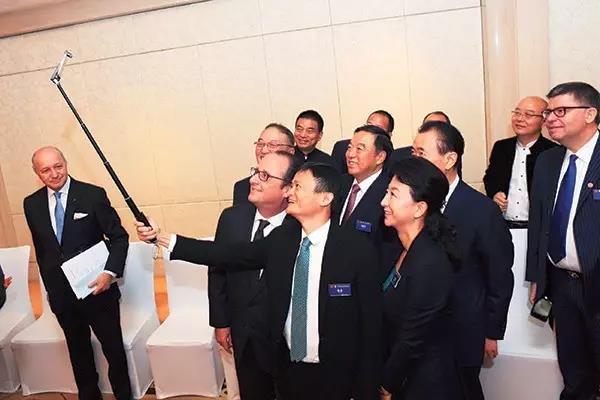
Monday, April 17, 2017
By Chen Yingqun in Beijing
Led by Jack Ma, elite entrepreneur club is building trust overseas to help Chinese firms extend global reach
Not only are they China’s most famous business leaders, they are also important envoys of public diplomacy eager to spread the word globally about the country and its thriving entrepreneurship.
Since 2011, the China Entrepreneur Club has made 12 overseas visits to countries including the United States, the United Kingdom, Germany and Italy. At each destination, members engage with the highest echelons of government and leading companies and entrepreneurs to discuss a wide range of issues.
During Canadian Prime Minister Justin Trudeau’s visit to China last August, his first public event was a meeting with the club. And in late 2015, French President Francois Hollande attended a breakfast meeting with them in Beijing during a state visit.
Zhao Qizheng, former minister of China’s State Council Information Office, has said he considers the club’s members “the business pillars of China’s public diplomacy”.
Established in 2006, the China Entrepreneur Club comprises 60 members made up of economists, scholars and founders of Chinese private companies. Their combined annual gross income is more than 3 trillion yuan (US$435 billion).
Jack Ma, founder of e-commerce giant Alibaba, succeeded Liu Chuanzhi, founder of the world’s largest PC maker Lenovo, to become the club’s chairman last May.
International visits are important annual events for Chinese companies on the lookout for overseas knowledge and opportunities, said Maggie Cheng, secretary-general of the club.
Last year, nonfinancial direct investment overseas by Chinese investors totaled US$170.1 billion, up 44.1 percent from the previous year, according to the Ministry of Commerce.
Cheng said the club works as a key platform to serve these entrepreneurs and to promote entrepreneurship in China. Its members all started their own businesses after the country’s reform and opening-up in the 1980s, and their companies rank in the top three in their specific industries.
A set of standards is in place for members joining the club: Their companies’ revenues must be worth tens or hundreds of billions of yuan; they must be leaders in their industries; and they must have a special approach to management, with involvement in corporate social responsibility programs, philanthropy and charity activities.
Even 10 years or so ago, when the engagement of Chinese companies around the world was relatively limited, many of those represented by the club had set out to test the waters overseas.
“We saw that in the process of globalization, Chinese companies were encountering very similar issues, such as complying with local regulations, market access and cultural integration,” Cheng said.
“We realized that the root of these problems was that there was this huge information gap between China and the world.”
Overcoming obstacles
Decades after China’s reform and opening-up, she added, the West recognizes China’s rapid economic growth but fails to understand the business dealings behind it all.
“So when it comes to entities in China collaborating with entities overseas, there are still many obstacles.”
The club’s international visits are a tool to communicate with the Western business world and to enhance understanding, Cheng said.
Ma Weihua, president of the China Entrepreneur Club and former head of China Merchants Bank, said he was highly impressed when he took part in the club’s visit to the UK in 2012.
During this trip, Chinese entrepreneurs and UK researchers and businesspeople at the Needham Research Institute in London discussed whether China’s institutional and economic systems were up to the challenge of promoting modern technological development.
“The British people raised many questions with us about China’s technological innovation, and we explained many things by drawing on personal experience,” Ma said.
The Chinese delegation gained a new perspective from the discussions, he said. “The way the idea sparks collided with one another was really impressive.”
Ma said that in visits arranged by the club, the Chinese businesspeople are always very astute when discussing issues such as visas and the business environment, and also with their explanations of how business in China operates.
When the club made its first visit to the US, many had no idea who these Chinese entrepreneurs were, let alone had much inclination to meet them.
“We really wanted to make an impact and bring about change, not just indulge in courtesy meetings. We wanted to broach important issues, and we needed to explain who we were, what the club was, what we were doing and why we were doing it.”
Cheng said that many businesspeople in the West were eager to learn more about Chinese business.
“The tales of Chinese entrepreneurs building their business empires from scratch are well-known in China, but few outside the country know these stories.”
She said a level of distrust was very likely when entrepreneurs were seeking potential overseas partners to work with.
“People might also have thought China was so far away and a little mysterious, and that one of the only things it could offer was low-end manufacturing. What we were able to do was set out the facts with these people face-to-face and sound out their views.”
The secret to success for businesspeople in China and elsewhere is identical, Cheng said.
“To be trusted you need to produce better products and offer better services, do well in competitive markets, respect competitors and customers, and take heed of the interests of all parties concerned.”
Ma, the club’s president, said that many businesspeople around the world are willing to participate in the club’s outreach activities, finding them invaluable.
“As individuals, most of us are unable to meet with that many people from the government and business worlds overseas, but as a group we can exercise influence,” he said.
“In these visits we can have candid discussions with people, some of whom may eventually become our business partners.”
Strong skill sets
Ma said all members of the club have strong entrepreneurial skills, can adapt to a changing business environment, have the desire to be innovative, are honest and trustworthy, have a sense of responsibility and are keen to repay society for their success.
Going global is a common challenge for Chinese entrepreneurs because the country’s economy is now so interconnected with the rest of the world, he said. Every company big or small, whether it makes products or provides services, needs global connections directly or indirectly.
“I’m very proud to be in a club in which I can learn so much by communicating with others,” Ma said. “When you are alone with no role model it is difficult to succeed. We are entrepreneurs, but we are also doing public diplomacy. I think Chinese
businesspeople could be good ambassadors to explain China to the world.”
The club also provides good opportunities for Chinese entrepreneurs to let the world know their ambitions, capabilities and the latest innovations they are working on.
Steve Tappin, CEO and founder of Xinfu, a consultancy that advises CEOs, said the China Entrepreneur Club plays a vital role as a bridge between China and the world.
The English businessman said that when he first met many of the top Chinese entrepreneurs, cultural and linguistic differences made it challenging to connect.
He recalled introducing Stephen Murphy, the former Virgin Group CEO, to Guo Guangchang, founder and chairman of Chinese conglomerate Fosun Group.
“It was not easy for them to deal with one another even though they were both outstanding businessmen.”
Nowadays it is very different, Tappin said.
“Guo has transformed himself by working hard on his English, his inner world via tai chi, and his understanding of global business dynamics. Western leaders need to make similar efforts to be successful in China.”
Cheng said that in the future, one key target for the club will be to consistently promote the globalization of Chinese entrepreneurs, “because we all believe that commercial competition cannot always be regional”.
“Strong companies need to face global competition,” she said.
The club is planning another event in the US later this year, she said.
Edward Tse, founder and CEO of Gao Feng Advisory Company, said that Western political and business circles are generally skeptical about dealings with China.
Moreover, many in the West think that China’s economy or companies are mainly State-owned and generally underestimate their value.
Tse said it would be of great benefit for more groups of Chinese entrepreneurs to communicate with influential businesspeople overseas. This would help both sides understand each other, he added.
“Entrepreneurs could represent China and explain its situation to the world. That would help change views about its companies and people, something that Chinese entrepreneurs need to keep doing.”
China Daily | New Year Will be Marked by Change
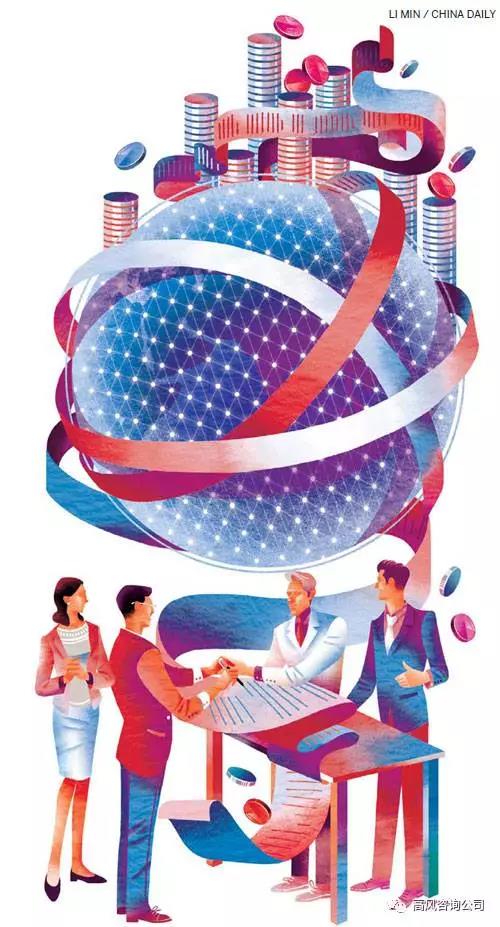
By Edward Tse | China Daily Europe | Updated: 2016-12-30
Uncertainty will dog 2017 but it will be offset by immense opportunity
It has been a monumental year for Chinese companies’ overseas investments. The companies, as a group have become the world’s largest source of foreign direct investment. According to Bloomberg, as of Dec 8. Chinese cross-border merger and acquisition activity for the year reached $237.7 billion (227.6 billion euros; 194 billion) – including $63.9 bilion and $83.4 billion on US and European acquisitions respectively – a year-on-year increase of 186 percent.
If the past quarter of 2016 is a sign of what is to come in 2017, then Chinese outbound investments will likely face a much more complicated environment, with the new year likely to be one of more geographically diversified M&A coupled with a decline of overall M&A volume, especially in the early part of the year.
In November 2016, the Chinese government made a decision to restrict capital outflows by increasing the scrutiny of Chinese outbound acquisitions over $10 billion and acquisitions of over $1 billion that are unrelated to the “core business” of the Chinese buyers. At the same time, the government also singled out investment in certain industries, such as foreign entertainment, hotels, real estate, film, and professional sports, where there will be increased scrutiny.
These additional capital controls didn’t just affect Chinese firms. Foreign companies were surprised to discover that the amount of cash needing approval by the State Administration of Foreign Exchange to be remitted abroad dropped from $50 million to $5 million and that the entire process will take more time than it did previously.
The results of the US presidential election and the rise of political populism in a series of other countries, including many in Europe, are casting major uncertainty on global politics. Both domestic and foreign pressures will force Chinese companies to become smarter and more knowledgeable when it comes to their global M&A goals and strategies.
How relations between the United States and China will evolve once Donald Trump becomes president remains highly uncertain and difficult to predict. There seems to be a prevailing political wind against further Chinese acquisitions of US companies, given the background of Trump’s major campaign controversies related to China throughout his presidential campaign.
It remains to be seen what awaits Chinese investors in the US in 2017, but a highly likely scenario is one in which it will be more difficult for Chinese acquisitions to get approval from the US government in sectors the government deems sensitive or potentially involved with national security. However, for the other sectors, one would be hard-pressed to imagine why and how the US government would not welcome Chinese investment.
A case in point is Fuyao Glass, which is investing $1 billion in the US, including a $500 million investment in Ohio to build the world’s largest automotive glass plant.
According to Cao Dewang, Fuyao’s chairman, the decision to invest in the US was based on analysis comparing the economics of producing glass in the US and in China. He concluded that it is in fact cheaper to produce in the US. By building a plant there, Fuyao’s investment would create between 2,500 to 3,000 local jobs. And job creation in the US, particularly in the blue-collar segment in the US rust belt, is a priority for the country.
Europe will probably continue in some form of economic stagnation in 2017. It may follow the US in policy-setting regarding Chinese businesses in some areas (China’s non-market-economy status, for example), but it may also decide to strike out on its own path in areas where it feels there would be tangible benefits to its member countries.
We expect Chinese companies to continue their interest in acquiring European companies – to gain access to necessary and more advanced technologies, for market access, or for bringing the acquired companies to the China market as part of business expansion.
The greatest risk for Chinese investors looking at European opportunities in 2017 will be an increase in local populism. European populism will be a wild card in 2017 that could cause Chinese companies seeking acquisition opportunities to be suddenly shut down by European leaders to satisfy their own citizens and fend off attacks from political rivals.
When Brexit becomes a reality in 2017, the United Kingdom will likely feel more vulnerable and possibly drive the UK government and its companies to cooperate more with their Chinese counterparts.
Already since the referendum, the pound sterling has depreciated quite a bit, from its high of 1:1.47 USD in May to 1:1.24 USD at its lowest to date in December, making the price of UK assets cheaper relative to the USD and RMB. This presents Chinese investors with opportunities to find good deals such as those found in British real estate investments.
As China looks at the world, there is clearly ample space beyond the US and Europe. In the past several years, China has stepped up its effort to play a more visible and influential role in international governance and geopolitics. The Belt and Road Initiative, though still nascent, is an ambitious and multinational program that could open up opportunities for Chinese and non-Chinese companies. Some of these initiatives can be huge and will take some time to materialize, if at all, but for the moment, good momentum is being generated.
We expect to see a higher degree of Chinese M&A activities in the countries along the Belt and Road. I recently visited Manila in the Philippines and met with a number of senior business executives. There was quite a high degree of interest from the Filipino business community regarding Chinese companies’ investment in their country.
This coincides with the renewed, improved diplomatic relationship between China and the Philippines – and, after all, the Philippines is also strategically located at the beginning of the Maritime Silk Road.
Of course, the Philippines is not the US or Europe. Nonetheless, it is an example of where Chinese investments are very much welcome.
We also expect more investment from Chinese companies along other parts of the land and maritime Silk Roads, and it will come not only from Chinese state-owned enterprises but also from private companies. Africa, in particular, could see a step-up in such activities, as many African countries need more and better infrastructure, and some of them are rich in resources that China desires. Strategically, China also sees Africa as an important ally.
Certainly, 2017 will bring uncertainties. In some cases, the Chinese companies’ overseas buying spree may be dampened, but in other cases it will probably happen with even more speed and intensity.
Economic nationalism will manifest in different ways across different countries. There will be a dampening of acquisitions in selected sectors, yet globalization and regional development will be intensifying in their own ways, and progress will continue.
Though a year of uncertainty, 2017 will also be a year of change – and for some, the uncertainty will be related to the immense opportunities.
Dr. Edward Tse is founder and CEO of Gao Feng Advisory Co, a global strategy and management consulting firm with roots in China. He is also the author of China’s Disruptors (Portfolio, 2015).
China Daily丨Internet will continue its disruptive course
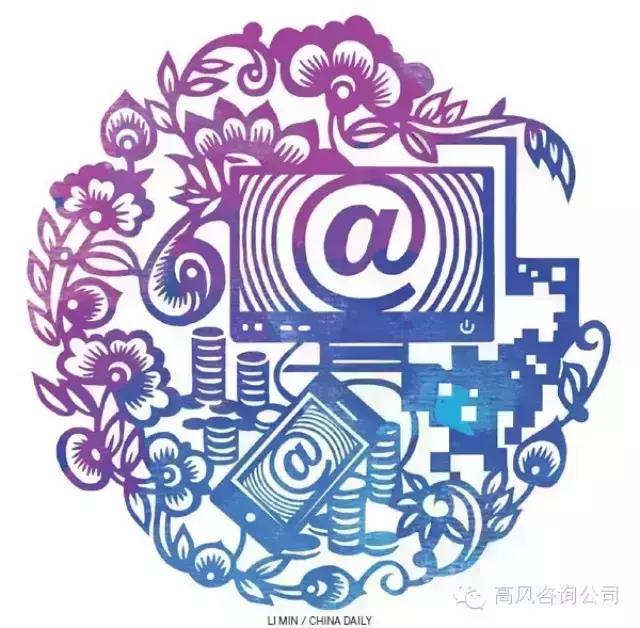
Updated: 2016-01-01 08:16
By Edward Tse (China Daily Europe)
Online shopping remains biggest e-commerce story in China but other sectors are growing, too
E-business will remain the most exciting and disruptive part ofthe Chinese economy in 2016 – unpredictable in detail, but unstoppable in the bigger picture of things.
The big three “BAT” companies, Baidu, Alibaba and Tencent, will maintain their dominance over the digital high ground, but even they – despite their technological strengths and huge war chests – will find it impossible to squeeze out the companies battling immediately below them, let alone the countless startups being formed each month by entrepreneurs eager to become the next Robin Li, Jack Ma or Pony Ma.
Through 2016, online shopping will remain China’s biggest e-commerce story, with many of the records set in 2015 – such as the 91 billion yuan ($14 billion; 12.8 billion euros) worth of goods sold through Alibaba’s platforms on Singles Day in November – all but certain to tumble again.
But we will also see Internet businesses penetrate deeper into other industries: from healthcare to insurance, further large-scale mergers andacquisitions, and more foreign companies going to China in search of their slice of the digital pie.
E-commerce retail sales will continue their blistering pace of growth. After increasing 42 percent to $672 billion last year – far outpacing overall retail sales growth of 11 percent – they are predicted to grow 35 percent to $911 billion in 2016, according to New York-based research firm eMarketer.
By 2018, e-commerce is expected to account for nearly 30 percent of all retail sales, up from 11 percent last year – a rate of growth that would make it a key force in realizing the government’s goal of making consumption the economy’s main growth driver.
But even more exciting, with its consumers accounting for just over 40 percent of the year’s worldwide retail e-commerce sales, China is reinforcing its position as one of the key global sources of online business innovation everywhere, from sales and marketing to logistics and distribution.
Already, purchases made with mobile phones account for around half of all Chinese e-commerce retail sales – way more than the one-fifth level of the United States and most other developed economies.
This growth can only continue. Still only half of all Chinese have access to the Internet, but falling smartphone prices and negligible charges to get online via the mobile Internet mean that China’s poorest regions will be a major new source of online shoppers.
In 2016, for example, online retail sales in China’s rural markets are set to reach 460 billion yuan – nearly three times greater than in 2014, according to Ali Research, Alibaba’s research arm.
Elsewhere, China’s Internet giants will continue pressing for change in the financial services industry. Having established the country’s dominant online payment network with Alipay and given savers higher returns viaits online money-market fund, Yu’E Bao, Alibaba extended its financial reach in 2015 with MYbank, an online-only provider of loans and other financial services to farmers and small and medium-sized enterprises.
Another new force in 2015 was WeBank – China’s first online private bank – backed by Tencent, which already has 500,000 clients for its wealth management products. And in November, Baidu linked up with China CITIC Bank to launch its own- as yet unnamed – online-only bank.
Away from finance and e-commerce, Alibaba will continue to expand its media footprint following its $4.2 billion acquisition of video-hosting website Youku-Tudou in October and its purchase of Hong Kong’s South China Morning Post newspaper for $266 million two months later.
Other recent big Internet acquisitions and mergers include the tie-up between Tencent’s Didi and Alibaba’s Kuaidi to create Didi Chuxing, China’s leading player in mobile transport. It faces plenty of rivals, among them Yidao Yongche, in which Beijing-based technology firm LeTV invested $700 million, and US-based Uber.
China’s two biggest classified advertising websites, 58.com and Ganji.com, also joined hands. So did group-buying website Meituan and local review platform Dianping.com, creating a $15 billion provider of online-to-offline services. Ctrip and Qunar combined to establish the country’s biggest online travel service provider with a market share of 70-80 percent. Last year saw leading Chinese Internet companies take further steps to “goout” to the rest of the world. Alibaba hired former Goldman Sachs executive J. Michael Evans to help make it a major power in the US. At the end of the year it opened offices in Munich and Paris to expand its European operations.
Other companies are following in Alibaba’s footsteps. To take on Uber in markets outside China, Didi Chuxing has invested in Lyft, Uber’s mainrival in the US, as well as in Ola, India’s top car-hailing app, and Singapore-based GrabTaxi.
Guided by former Google executive Hugo Barra, smartphone companyXiaomi is expanding in India, Brazil and Indonesia. And LeTV is funding a $1billion investment near Las Vegas in Nevada to build an electric vehicle manufacturing plant, saying it wants to take on Tesla.
The energy of China’s Internet economy is once again attracting attention from companies around the world. Despite widespread Western media reports about government obstacles to overseas investment, foreign tech companies are more and more looking to China as an essential part of their global plans.
December saw Apple and Samsung each reach agreement with UnionPay to bring their respective payment systems – Apple Pay and Samsung Pay- to China. Google may follow with Android Pay.
That news followed Uber announcing a $1 billion China push, LinkedIn taking its total number of China users past the 10 million mark and Airbnb securing $1.5 billion for its China expansion plans from China Broadband Capital, Sequoia Capital and other investment firms with deep experience in the country.
Given the combination of official support, market growth and the intense hunger for success that drives so many business people, it is hard to see anything derailing China’s digital future. As the country’s leading vehicle for innovation and entrepreneurship, the Internet will continue to disrupt industry after industry through 2016.
For those able to harness its extraordinary forces, however, it will also remain by far China’s most exciting source of business opportunities.
The author is founder and CEO of Gao Feng Advisory Co., a global strategy and management consulting firm with roots in China. The views do not necessarily reflect those of China Daily.
China Daily丨Multinationals Need to Change With the Times

Updated 2015-08-11
By Edward Tse丨China Daily
By now, everyone has heard of China’s “new normal”. It refers to a slowdown in the country’s economic growth rate from double digits, which lasted for more than two decades, to around 7 percent in the past few years.
Media reports have stated that the “golden age” for multinational companies in China is now over. Moreover, surveys by foreign chambers of commerce, including those from the United States and the European Union, show that many of these companies complain of unfair competition, a lack of respect for intellectual property rights and corruption in China.
Yet there is another more interesting view that the country is moving from a “rising tide” to “pockets of opportunities”. When China’s GDP was growing at about 10 percent per annum in the 1990s, multinational companies saw huge opportunities here.
That was a period when the tide was rising and the boats in the water were riding high. For many multinational companies, they were good times. But with the “new normal”, many believe the tide is starting to turn, with fewer opportunities on the horizon.
Even so, there are still “pockets” of growth in the Chinese economy, particularly for companies that produce quality products and services. It is impossible to simply view the country through a “new normal” prism. This would not provide a true picture of the economic reality.
Of course, China is not ideal for every company – overcapacity will continue to be an issue in certain sectors, and this will take some time to correct.
For some multinational firms, the road ahead may be difficult. Those in joint ventures with State-owned enterprises may become disillusioned by a lack of innovation and commercial sense when dealing with their Chinese partners. In others cases, local governments may not be 100 percent in sync with the central government, creating confusion for companies.
But there are still a range of sectors that multinationals can exploit, and while growth across different industries will vary, demand patterns will eventually emerge.
At the same time, customers and competitors are likely to change dramatically, so maintaining the status quo will not be an option. These changes will also bring risks as new rivals and business models, coupled with government policies, threaten the dominance of multinational companies.
This is a mixed picture, but given China’s size, speed of growth and resilience, the odds are in the country’s favor. For multinationals, they need to examine what it means to do business in China and understand the country’s culture. Without a full appreciation of the “China Context”, which by definition evolves, they will miss the boat.
Unfortunately, many companies view the country as just another “emerging market”. They simply pursue the cookie cutter approach – cutting and pasting their global model and using it here to do business. Sometimes, this is successful, but more often than not it fails.
They simply do not understand that the Chinese market is far more complicated and diverse than what they are used to.
While many multinational companies have been talking about “localization” for the past decade or so, the great majority of them are still treating local managers as mere “operators” rather than leaders. Until they are accepted at a senior level in multinational companies, the business environment for them will be challenging.
The author is CEO of Gao Feng Advisory Company. He is author of The China Strategy (2010) and the newly released China’s Disruptors.
China Daily | Nation No Longer a ‘Wasteland’ for Entrepreneurs

Updated: 2015-07-07
By EDWARDTSE/BILL RUSSO(China Daily)
China’s Xiaomi Redmi 2 smartphones are displayed to the media during their launch in Sao Paulo, Brazil, June 30, 2015.
Rising generation of business leaders creates value-added solutions
People unfamiliar with recent developments within China generally believe that the nation lacks innovation capabilities as well as the infrastructure to support entrepreneurship. The stereotypical view, often fueled by Western media, portrays China as an “innovation desert” full of copycat companies that make shanzhai (fake) products.
They describe a China that lacks innovativeness due to an inadequate system of intellectual property protection, a rote-learning educational system that stifles creativity and a business landscape dominated by State-owned enterprises.
This perception is based on China’s history, but it does not reflect current realities. Worse, it fails to recognize the emerging wave of innovation from China.
Understanding innovation in the context of contemporary China requires a broader definition of innovation, beyond the classic product or technology-centric view espoused by Western management theory. We suggest a broader interpretation of innovation that includes solutions that offer added value to customers or businesses, which may be manifested in a variety of forms, but are not limited to low-cost disruptions or technological breakthroughs.
To better understand this broader view of innovation, we should look deeper into examples coming from China.
Three layers of innovation
In our view, there are three essential layers of innovation: people, organization and market.
At the core are people. Large corporations often find it difficult to maintain the same level of creativity and freedom, both of which are conducive to the innovation process, as exists within startups. In China, a growing culture of mass entrepreneurship and relevant favorable policies are emerging. As a result, we are witnessing rapid growth in startups, which serve as the breeding ground for creative entrepreneurial minds.
Inspired by successful examples of private entrepreneurs, a “why-not-me” mentality motivates aspiring young entrepreneurs to create solutions that deliver value. This new breed of young entrepreneurs are adept at identifying new and creative ways to add value to consumers’ lives within a volatile and sometimes sub-optimal environment.
Among the entrepreneurs who were born in the 1980s and 90s, there is a strong sense of entrepreneurial zeal and optimism ignited by recent successful examples of Alibaba Group Holding Ltd’s Jack Ma, Xiaomi Inc’s Lei Jun, Tencent Holdings Ltd’s Pony Ma and many others.
There are other factors in play that are creating a more favorable environment for innovation. These include China’s grassroots’ openness to the world, experienced returnee entrepreneurs with expertise and access to a global pool of resources gained from their experience abroad, and simply China’s scale that allows good business ideas to scale up rapidly.
China’s large population base also helps increase the probability of success from “trial and error” experimentation with new solutions. Many grassroots entrepreneurs are able to spot market imperfections and leverage that contextual understanding to create relevant solutions.
Lei Jun is a case in point. Xiaomi’s approach to innovation relies on a deep understanding of customer needs and continual feedback to tailor products for specific usage requirements.
Second, organization. Organizations typically resist change when they become successful. As markets mature, market leaders often lose their competitive edge as they fail to anticipate change, typical across numerous global industries.
As we know, China’s market changes fast. Many Chinese companies are very young and have a higher risk appetite for opportunities and radical innovations. A well-known case is how Haier Electronics Group Co Ltd achieved significant growth when it introduced a washing machine capable of cleaning not only clothes but also potatoes.
This demonstrates Haier’s awareness of indigenous demand from China’s lower-tier cities and the company’s customer-centric management philosophy.
Entrepreneurial Chinese organizations can be described as hungry, agile and nimble. They continually push for growth because there is no legacy of success to protect. This innovative character results in higher levels of patent activity and investment into research and development.
Third and last is the market. Critics often point to the flaws in China’s lack of market-centricity when expressing concerns about the future. These criticisms often dwell on the dominance of SOEs in certain sectors, a lack of transparency, the abundance of government incentives pushing for technological change without oversight mechanisms and the heavy presence of government investment to drive the economy.
SOEs will continue to play a major role in China, but private companies have emerged across multiple sectors (including foreign entities in China) and will become the dominant forces of innovation and economic expansion. In open sectors, competition has become intense as foreign corporations, SOEs and local private companies vie for a piece of the pie. Deregulation has been a major driver for China’s growth over the past couple of decades and that will remain the case.
Over the past couple of decades, China’s market has experienced unprecedented economic expansion, aided largely by government policies that provided top-down support at national and provincial levels. Tangible benefits include science and R&D parks as well as industry clusters throughout China. The supporting foundation for continued growth and innovation is also falling into place, including fast consumer adoption of the Internet, creation of startup incubators, and increased sources of funding for new businesses from venture capital, private equity and angel investment.
Innovation breeding ground
China is a complex, diverse and dynamic market, characterized by intense competition. Chinese companies are emerging with unique capabilities to win the bases of competition through lower cost, better quality and faster execution.
Innovative Chinese companies such as Baidu Inc, Alibaba, Tencent, Xiaomi, Haier and others have demonstrated unique capabilities and an innovation mindset well-suited to China’s unique context. Such businesses have proven capable of building cross-industry ecosystems for collaborative innovation and a willingness to “boundary jump” across traditional industry lines. These ecosystems exhibit “biodiversity”, which makes the entire value chain more robust and sustainable; of course, up to certain limits.
The China context can be described as a highly complex, diverse, dynamic and discontinuous environment accentuated by time-space compression. Within this breeding ground, innovative Chinese companies are leveraging this market context to deliver exponential growth.
Edward Tse is founder and chief executive officer and Bill Russo is managing director of Gao Feng Advisory Co, a global strategy and management consulting firm based in China.
China Daily | Partnership at Heart of Consulting Companies

By EDWARD TSE (China Daily)
Updated: 2015-05-12
Successful management consulting firms generally operate under a partnership structure. Recently, partnership as an organizational arrangement has also become popular in China, as some corporations claimed to have adopted it and some others are considering it.
In contrast to its novelty in China, partnership has been in practice in the West for a long time, especially among professional service firms like law, accounting and consulting. After more than 100 years of development, the consulting profession has produced a small number of sustainably successful global firms. Partnership is their common underpinning.
Although many Chinese consulting firms also claim to be a partnership, their actual way of conduct is actually quite different from the international modus operandi.
Partners play a dual role. While collectively they own the firm as shareholders, they are also employees. The typical course of a consulting career follows a structured path from bottom to top. MBA graduates generally start as associates, transitioning into senior associates after two or three years of strong performance and getting promoted to principals in another two to three years.
Principals become eligible for election to partnership after another two to three years in the role. In the United States, partnerships are legally regulated, with partners charged with unlimited liability. To mitigate related risks, many professional service organizations register for limited corporation status while maintaining the partnership internally.
An MBA graduate usually takes six to 10 years to become a partner in a global consulting firm. Partner selection is a rigorous process, typically starting with local country (or practice areas) partners selecting and nominating candidates (often principals with a strong track record).
Each candidate will be assigned to an assessor from another office to help evaluate the individual on multiple dimensions. These include people development, client and market development, quality of work and partnership, a strong demonstration of adherence to core leadership values and partnership spirit; where motivation is not primarily driven by dollars and cents. Finally, financial metrics measure the ability to bring in revenues and to deliver against firm’s financial targets.
These dimensions are assessed using a 360 degree approach, with feedback from both internal and external parties. The committee then evaluates the readiness of the candidate based on this data. Upon completion of the evaluation, the committee submits a list of candidates to the board of directors for approval to be appointed as partners.
Objectivity is key for meaningful assessment. Top consulting firms have an international partner appraisal committee, using a peer review process where partners from different regional offices or practice areas (most often not knowing one each other, at least not very well) assess one another based on facts gathered from interviews.
Although some Chinese corporations and many local consulting firms claim to have adopted a partnership structure, many are not doing it right. Genuine partnership is not simply a label, but rather, at the heart of the practice lies a set of intangible and robust core values, which makes real partnerships enduring.
The author is founder and CEO, Gao Feng Advisory Co, and author of The China Strategy and the Forthcoming China’s Disruptors.
China Daily | Hold onto Your Hats: Change is Coming

By Edward Tse (China Daily Europe)
Framework of Chinese management faces an exciting future
People are increasingly asking whether China will yield new management theories and strategies as happened in Japan in the 1980s.
China today and Japan then were fast-growing economies, both had companies popping up everywhere, and in many cases with surprising results to people in the West. However, while Japanese companies and management practitioners were able to develop and leave behind a series of management and business practices and theories, their Chinese counterparts have been unable to do so, at least not so far. I believe this is going to change.
The real underpinning of the development of leading business management and strategy theories is the China context. As we all know, China’s market is large, growing rapidly and complicated. Changes are often multidimensional, non-linear and even discontinuous. In many arenas we see the world’s mostcutting-edge phenomena co-existing with some of the most rudimentary counterparts. While the role of the government continues to be strong andalmost omnipresent, private sector entrepreneurs are becoming a much morepotent force. Importantly, in the open sectors, some of the world’s mostintensive competition is taking place among the multinational companies,Chinese state-owned enterprises and privately owned ones all fighting for alarger piece of the pie. Intensive competition drives companies to innovate,and this is taking place today.
Xiaomi, the smartphone company, has made tremendous strides in less than four years, from scratch to becoming the world’s third-largest smartphone seller, after Samsung and Apple.
Its valuation is said to be $40 billion (32 billion euros). Contrary to what some US journalists have reported, Xiaomi is not a copycat of Apple. Its business model is fundamentally different and innovative.
It builds a strong following of “fans of Xiaomi”(“mifen” in Chinese) by leveraging on the social media. Based on the feedback of its fans, Xiaomi updates its smartphone software every week, a feat that is difficult for others to emulate. Today there are about 70 million mifen, and the number is growing. The combination of a loyal user base, “zero-distance” customer interactions, fast response cycle and ultimately a stellar reputation through word of mouth is what makes Xiaomi unusual and tough to beat.
Alibaba built its business over the past 15 years through a series of strategic jumps and made history this year by being the largest ever IPO in theUnited States. It started as a business-to-business platform, jumped onto customer-to-customer (Taobao), then business to customer (TMall), followed by payment (Alipay) and consumer finance (Yu’ebao), coupled by big data, logistics and other areas. The willingness to challenge and go beyond the traditional narrow premise of core competence theory has enabled Alibaba to jump from one business to another, which is emerging as a real skill and underpins a new type ofbusiness model.
Haier, China’s leading white-goods manufacturer, is now undergoing a transformation. It is taking apart its original organizational model and is encouraging its staff to form a series of smaller entrepreneurial companiesforming a “networked organization”.
Zhang Ruimin, Haier’s chairman, believes the change will allow thecompany to be much more responsive to its customers and create a new corporateplatform fostering more innovation, agility, flexibility and adaptability.
Needless to say, this is a comprehensive and deep transformation of anindustrial organization. As a visionary and vigilant leader, Zhang foreseesthat the future will be drastically different from today, and companies will need to reinvent themselves if they want to survive.
In addition to Xiaomi, Alibaba and Haier, many other companies in China are experimenting in their own ways to innovate and change. Many will probably get lost along the way but some will find ways of breaking through. Leaders of these companies are forming their own views on the ways businesses ought to berun and organize their strategies.
If we take a step back we will begin to see an emerging pattern, and this pattern is the basis for new business and management practices or theories that are coming out of China.
Charles Darwin’s survival-of-the fittest model manifests itself profoundly in China and will gather even more steam. While the Japanese management practices of the 1980s were mostly about techniques that usually had clear and well-defined methodologies, the Chinese contributions are probably going to be about management and business model philosophy and approaches that arise out of the China context.
After all, China does not defy the laws of nature. It simply expands the number of dimensions in business relative to that in the rest of the world, and these additional dimensions will form the context for new inspiration and lessons in business and management.
The author is founder and CEO of Gao Feng Advisory Company, a globalstrategy and management consulting firm with roots in China. He is author ofthe award-winning book The China Strategy, and an upcoming book China’sDisrupters, to be published next year.
(Published in China Daily European Weekly, 12/05/2014,page-9)

